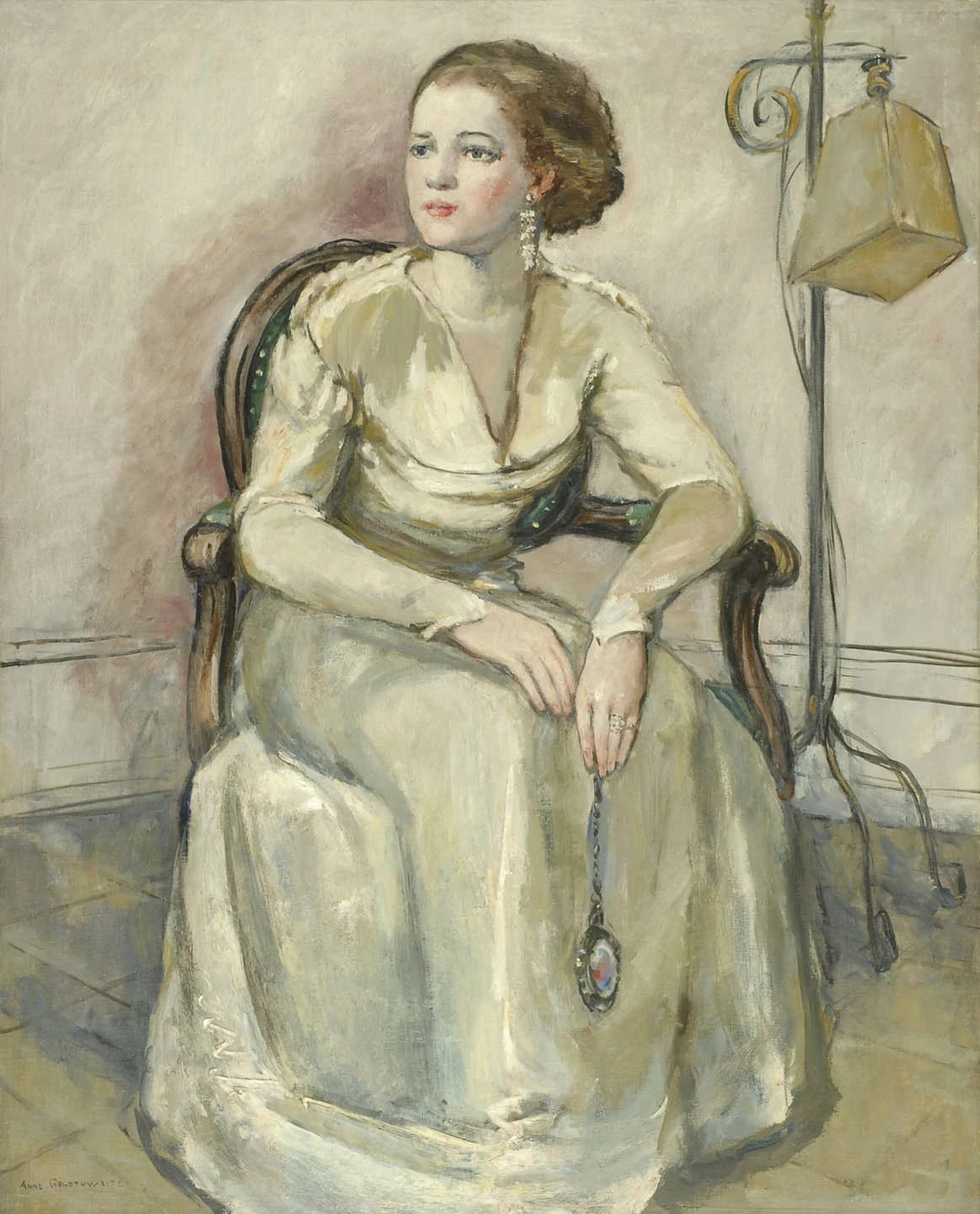
Portrait of Frances Greene Nix Anne Goldthwaite, 1935 – 1940
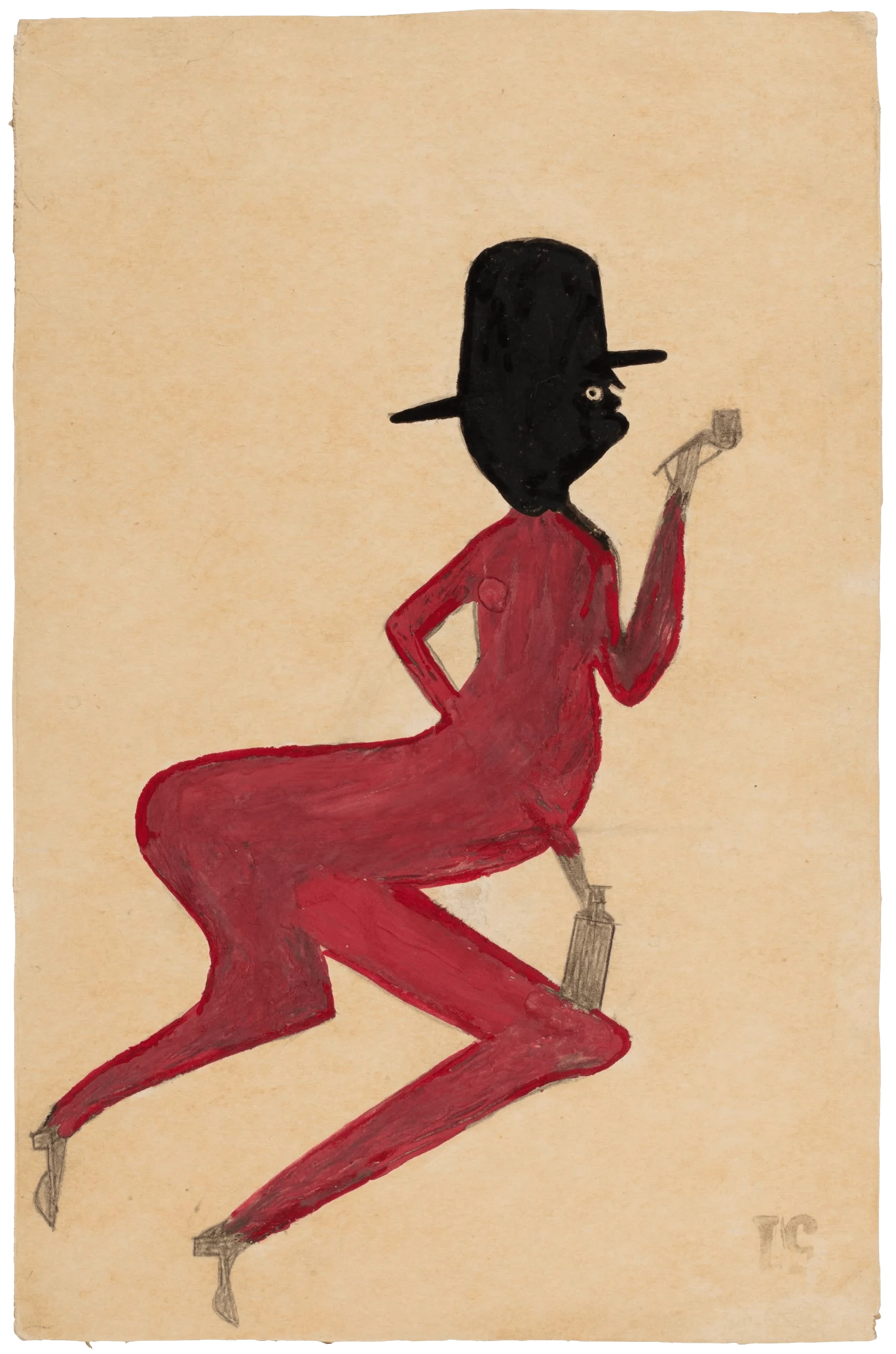
Red Man Bill Traylor, 1940
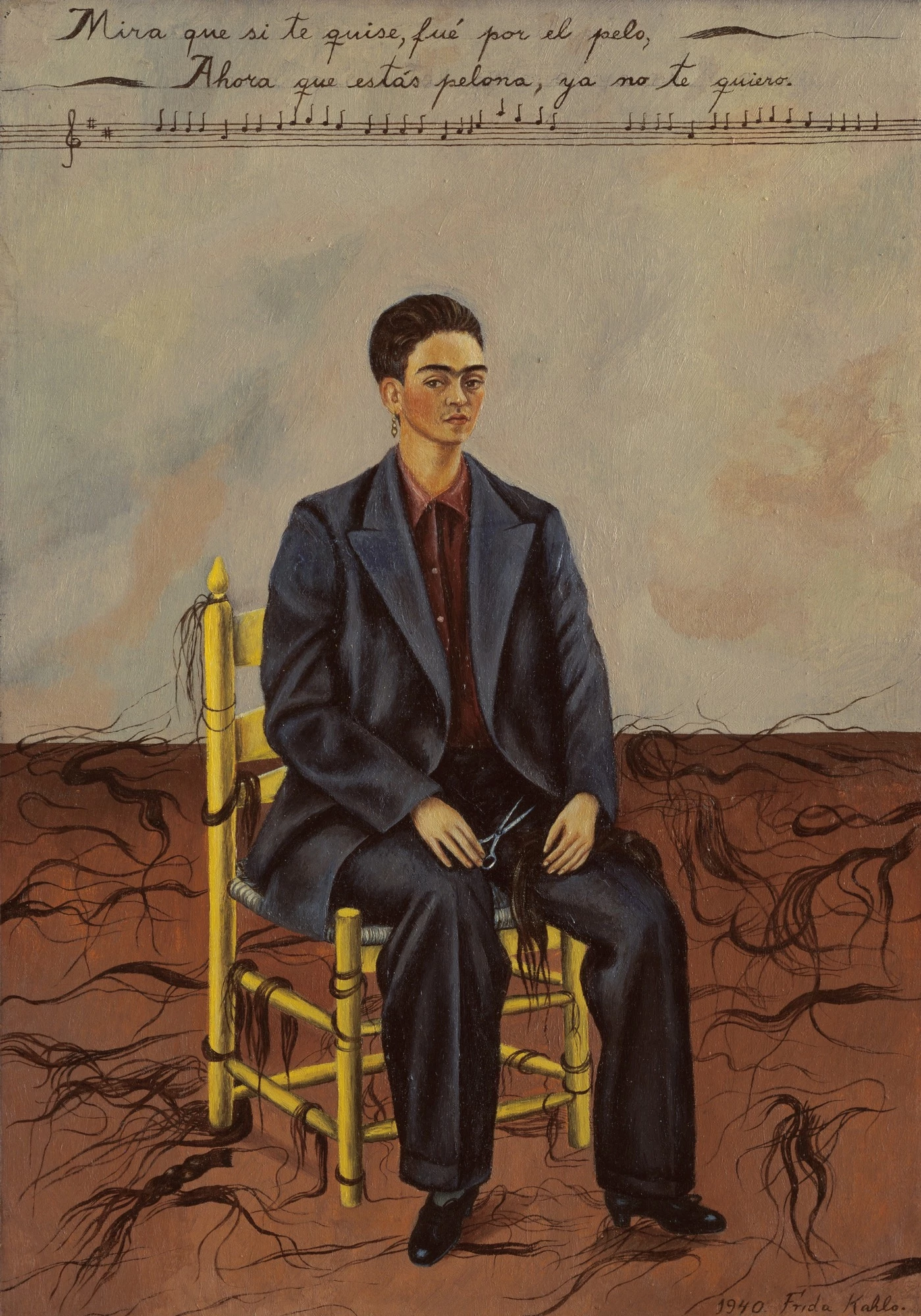
Self-Portrait with Cropped Hair Frida Kahlo, 1940
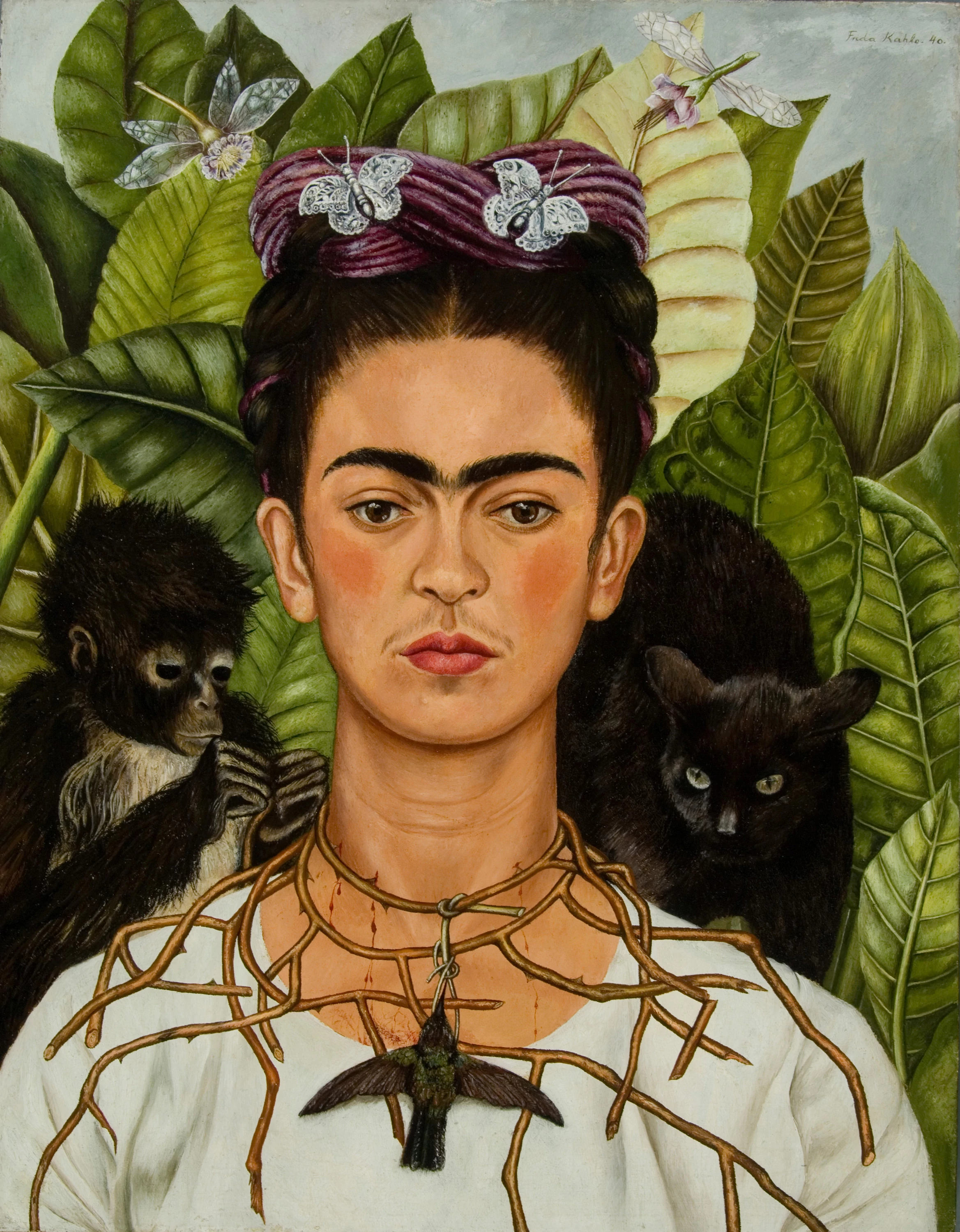
Self-Portrait with Thorn Necklace and Hummingbird Frida Kahlo, 1940
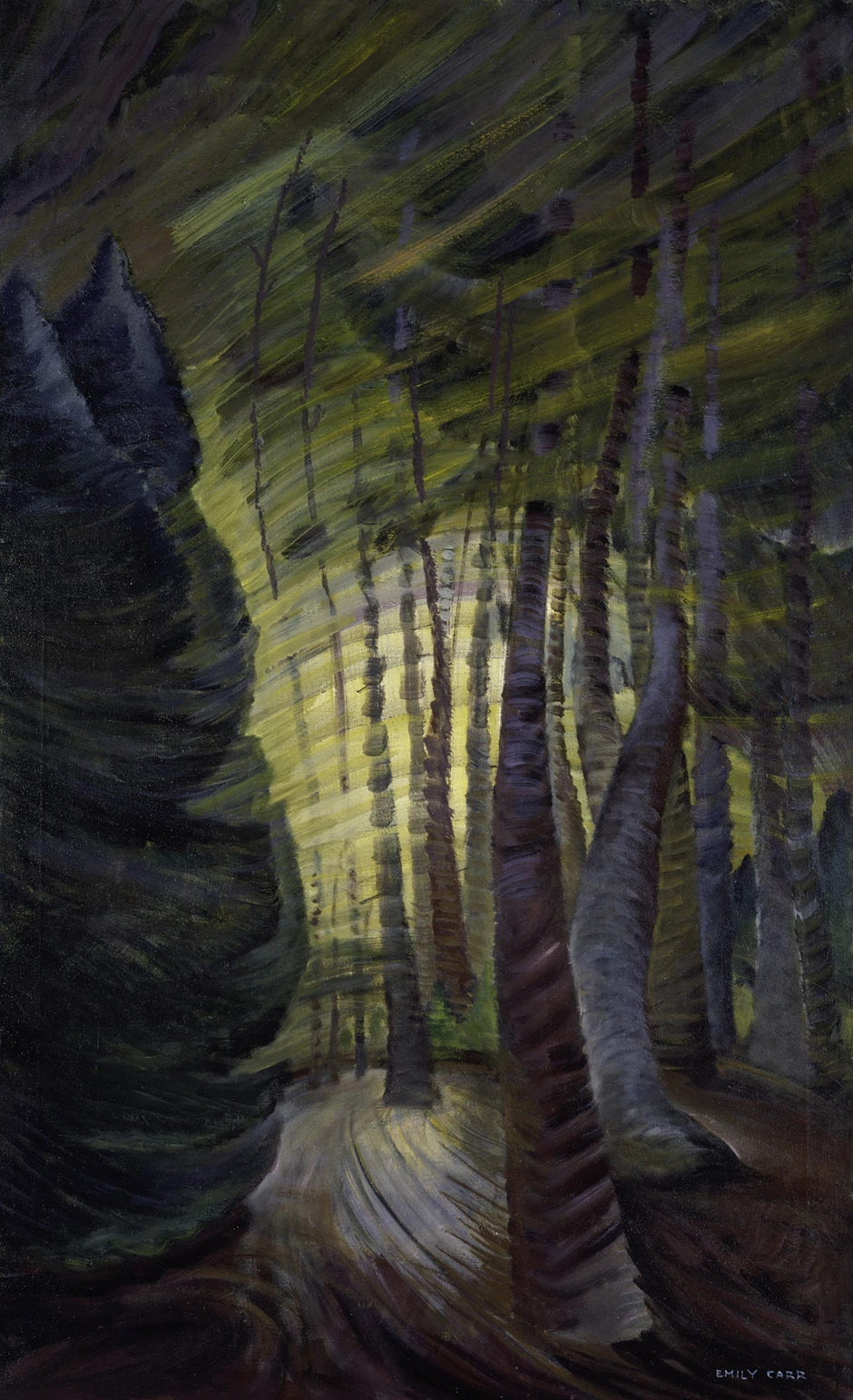
Sombreness Sunlit Emily Carr, 1938 – 1940

Spider’s Web John Dunkley, 1940
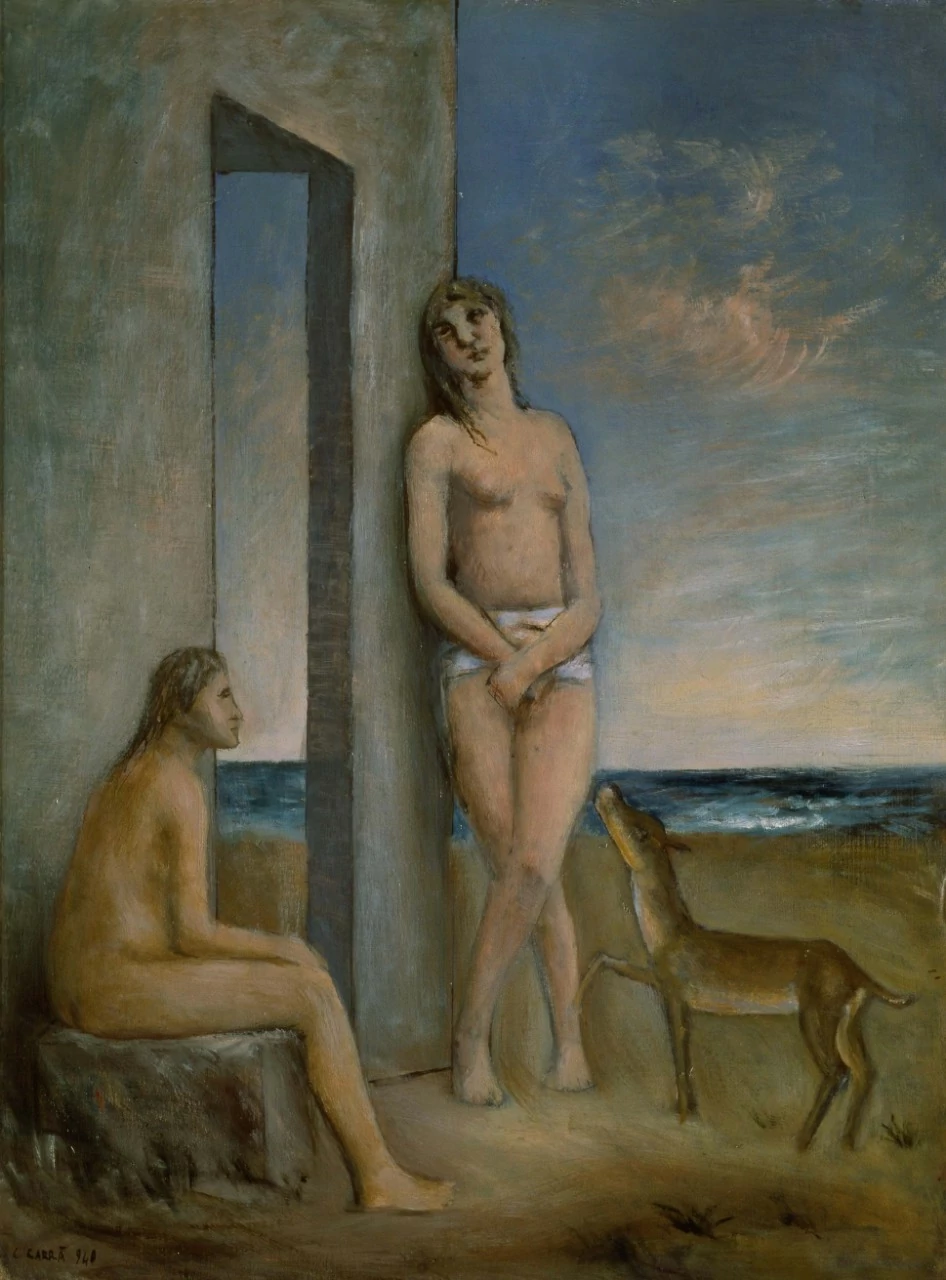
The Daughters of Lot, 3 Carlo Carrà, 1940

The Escape Ladder (from the Constellation series) Joan Miró, 1940
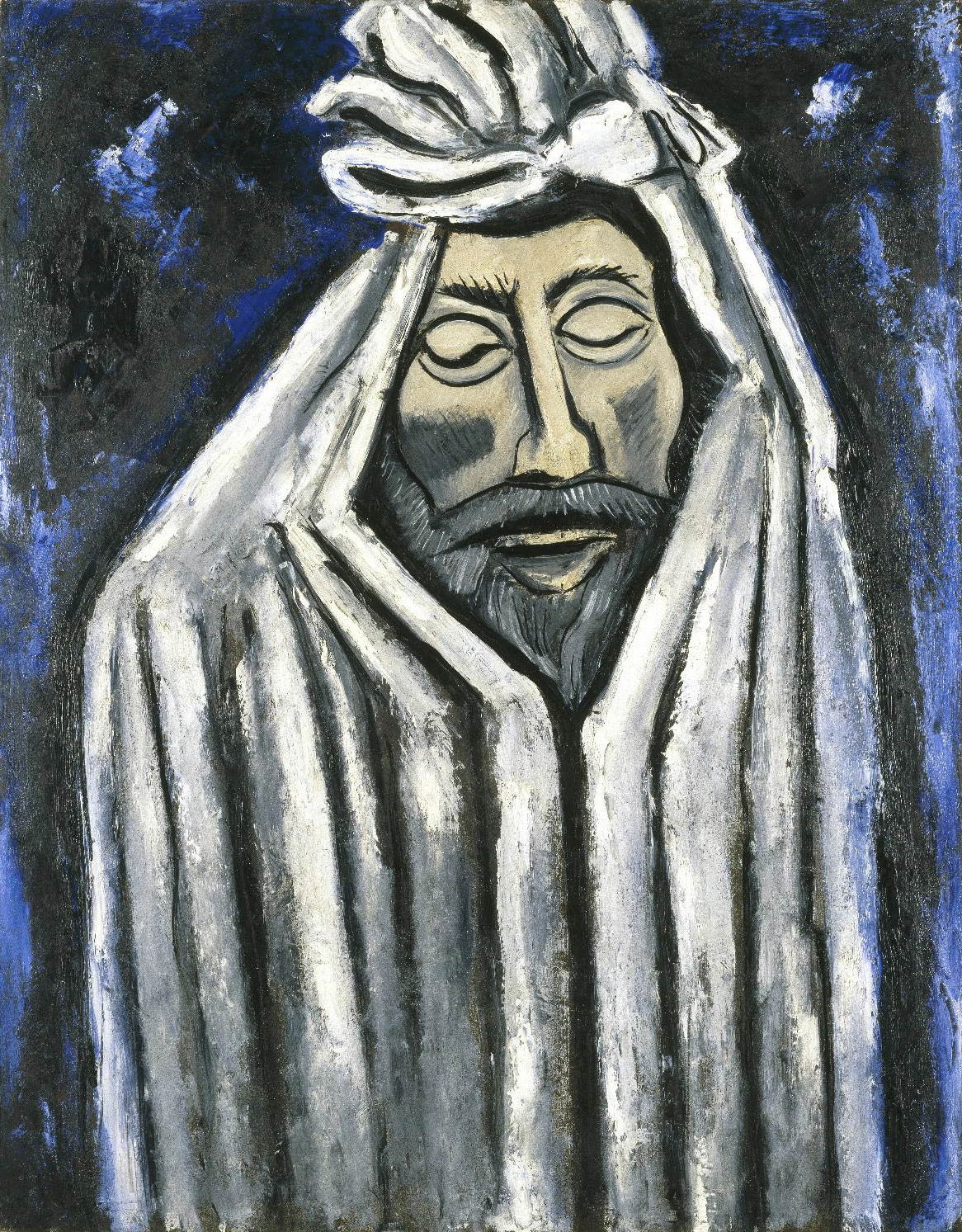
The Last Look of John Donne Marsden Hartley, 1940
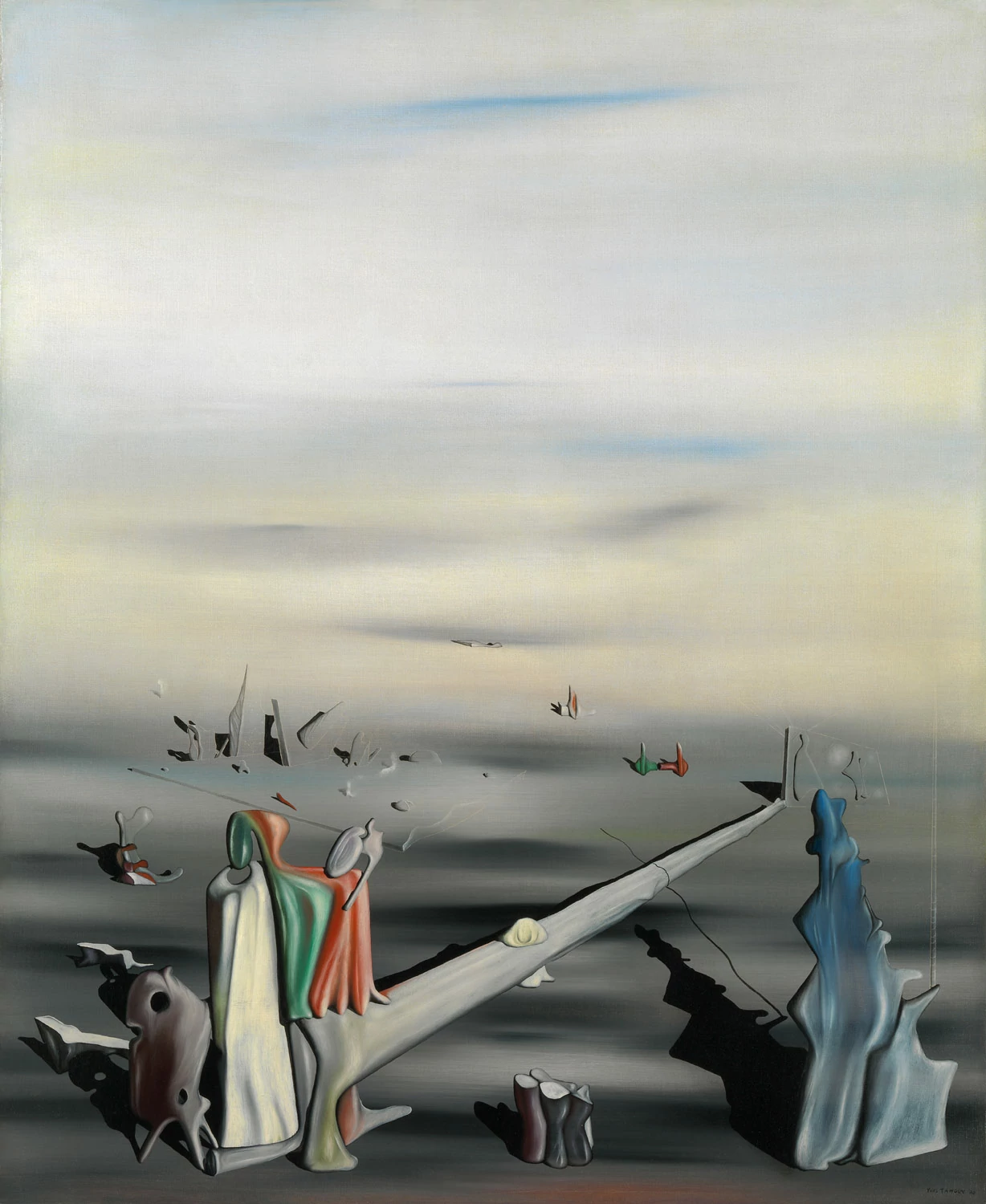
The Satin Tuning Fork Yves Tanguy, 1940

The Study of a Student Laura Wheeler Waring, 1940

Three female figures Madge Gill, 1940
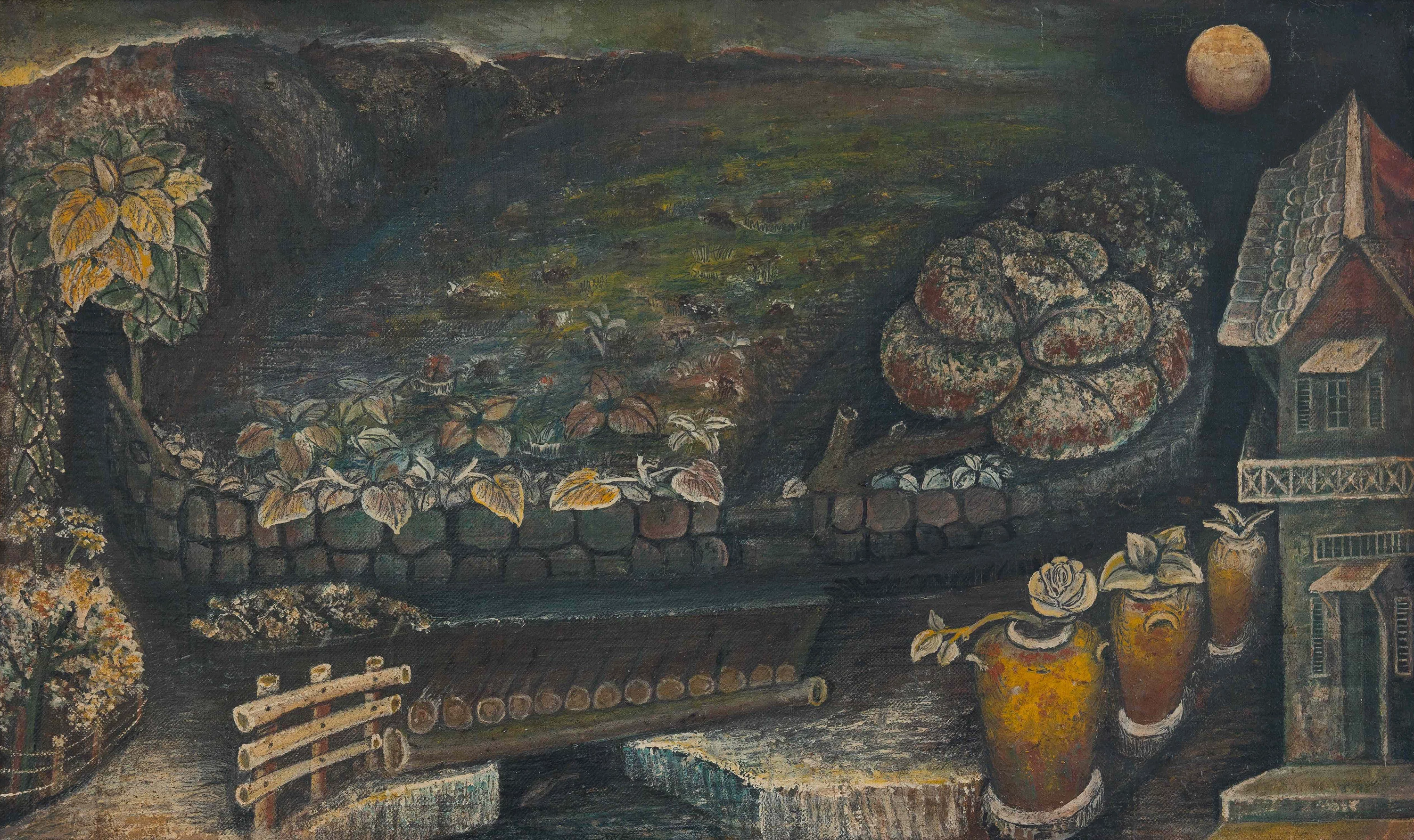
Three Spanish Jars John Dunkley, 1940
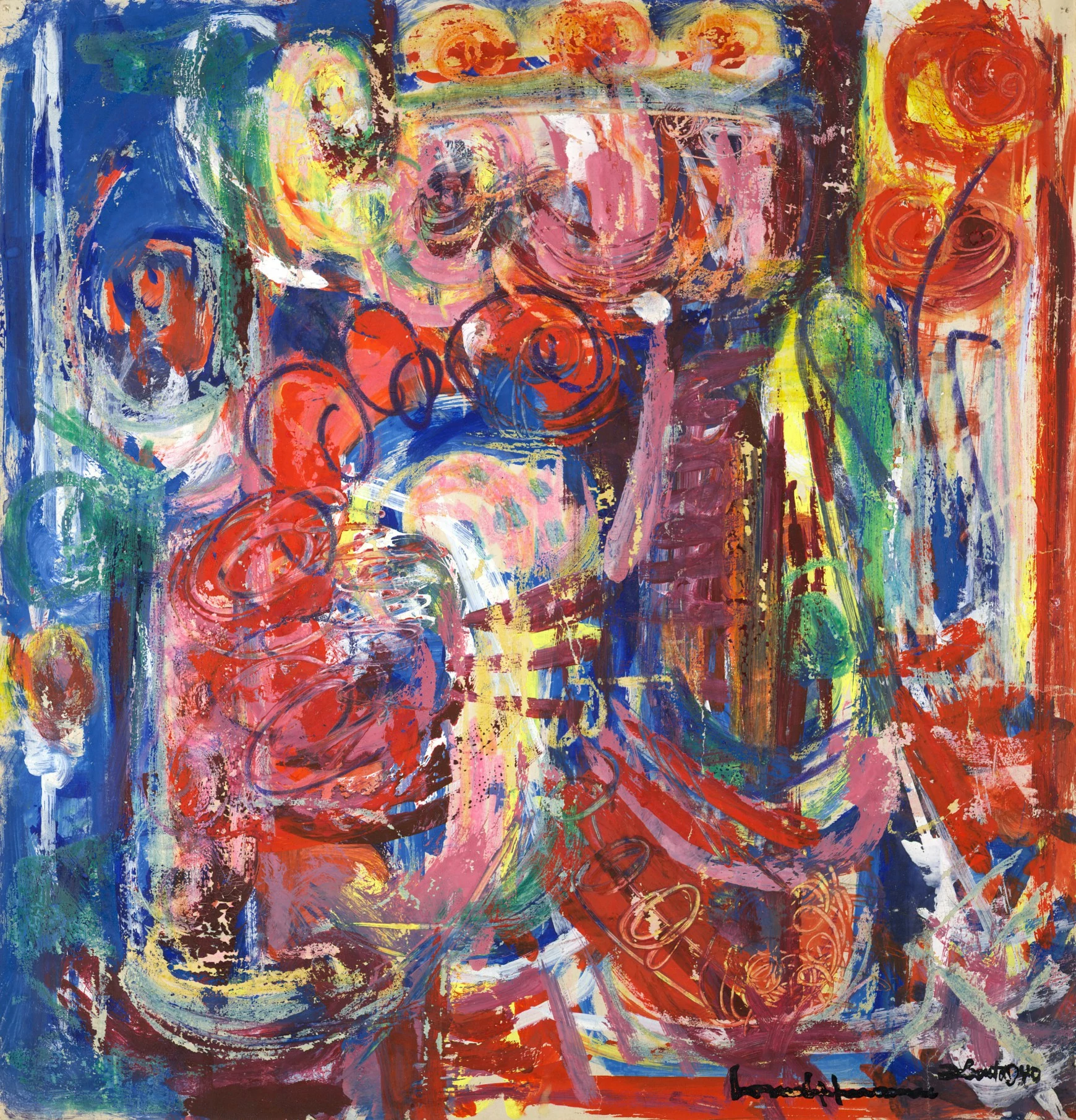
Untitled Hans Hofmann, 1940
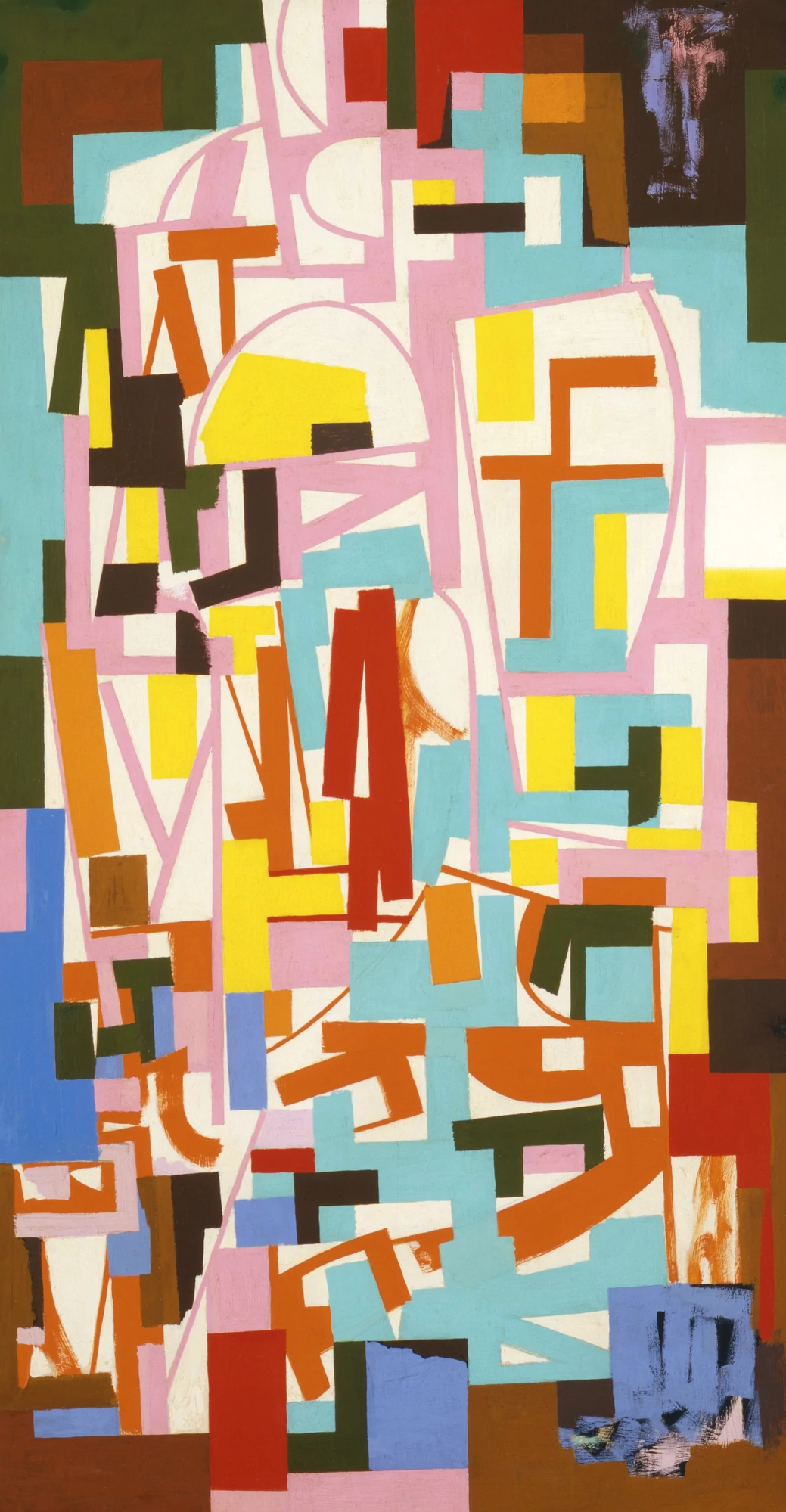
Untitled Ad Reinhardt, 1940

Woman with a blue bowl Lê Phổ, 1940
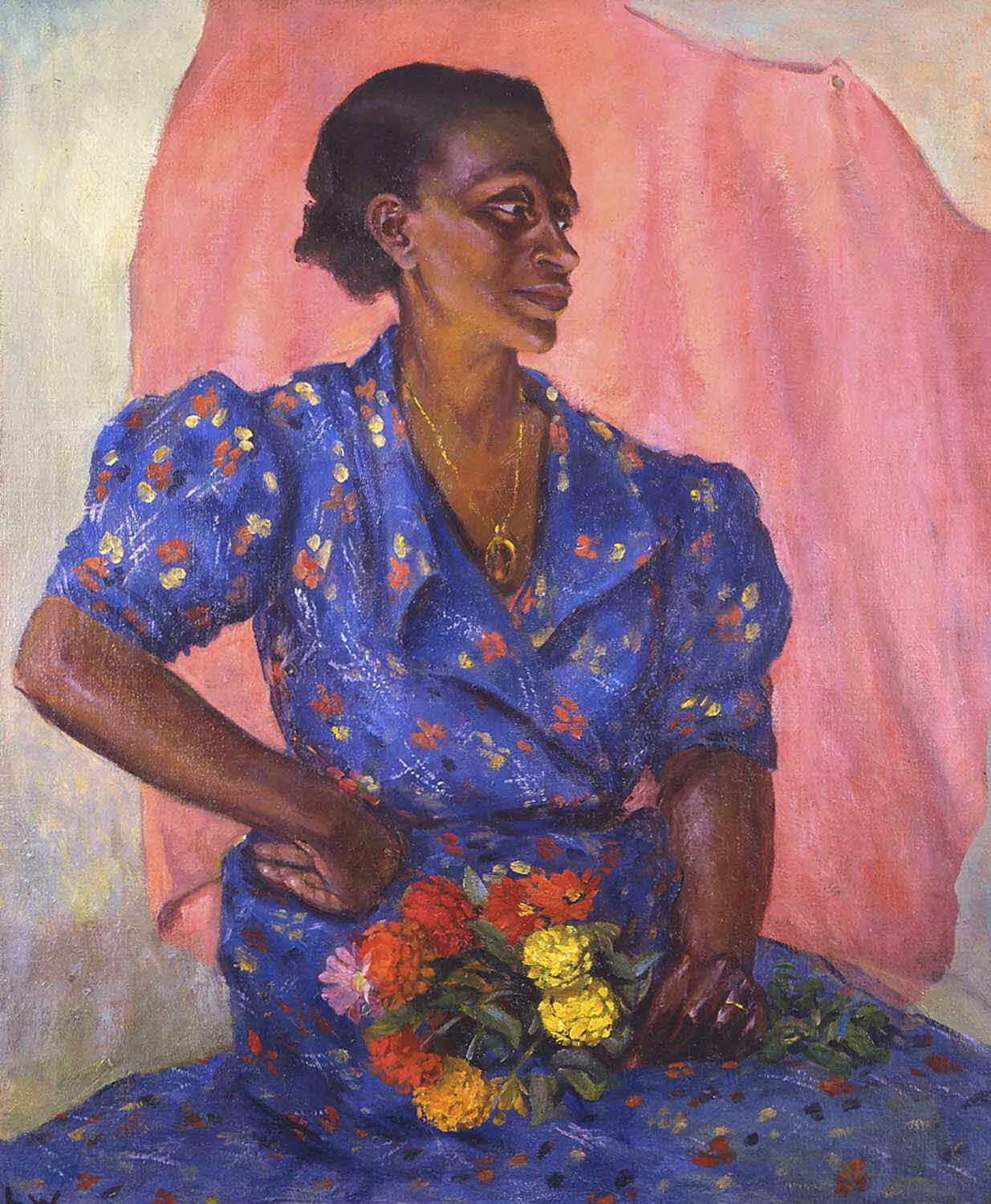
Woman with Bouquet Laura Wheeler Waring, 1940
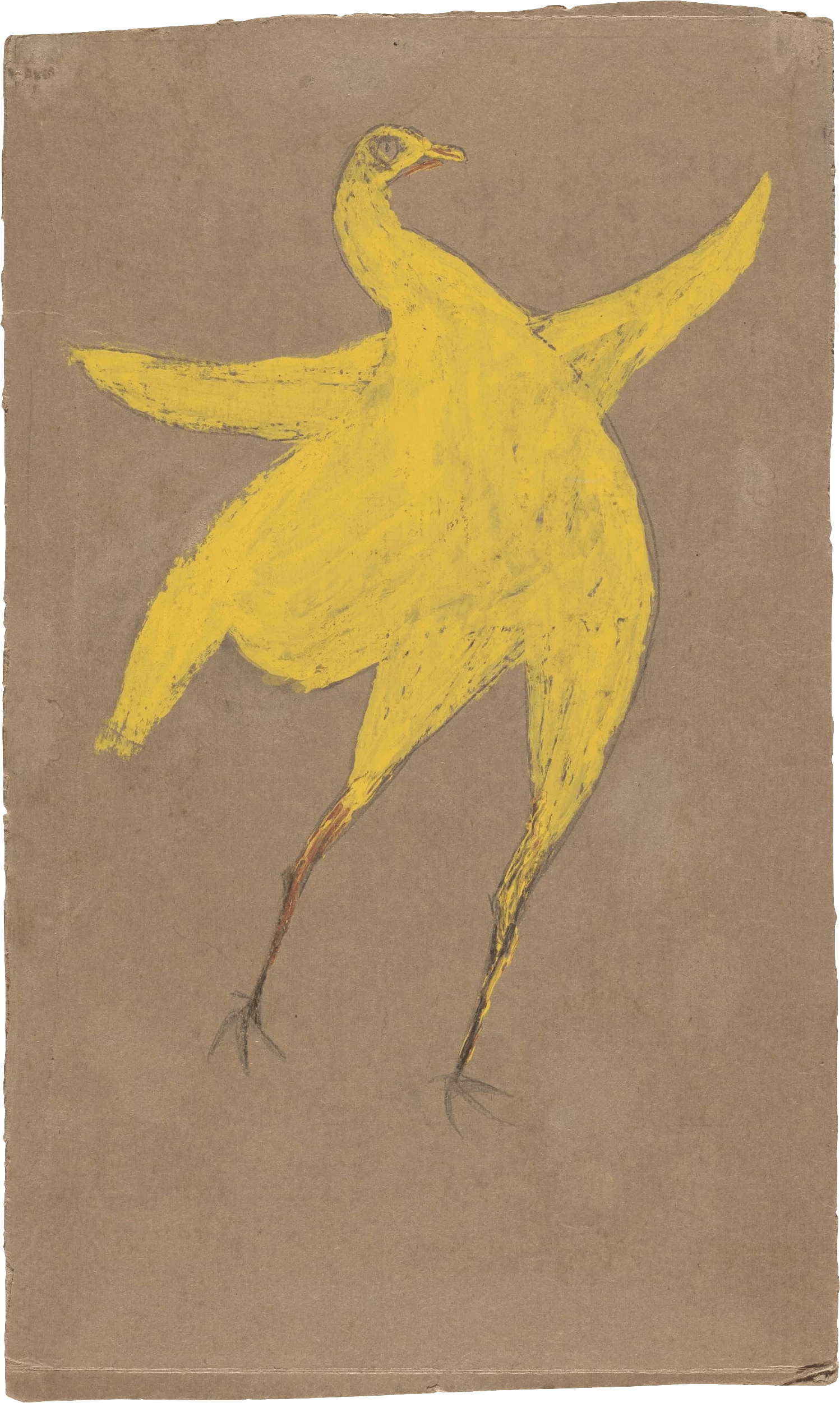
Yellow Chicken Bill Traylor, 1939 – 1940
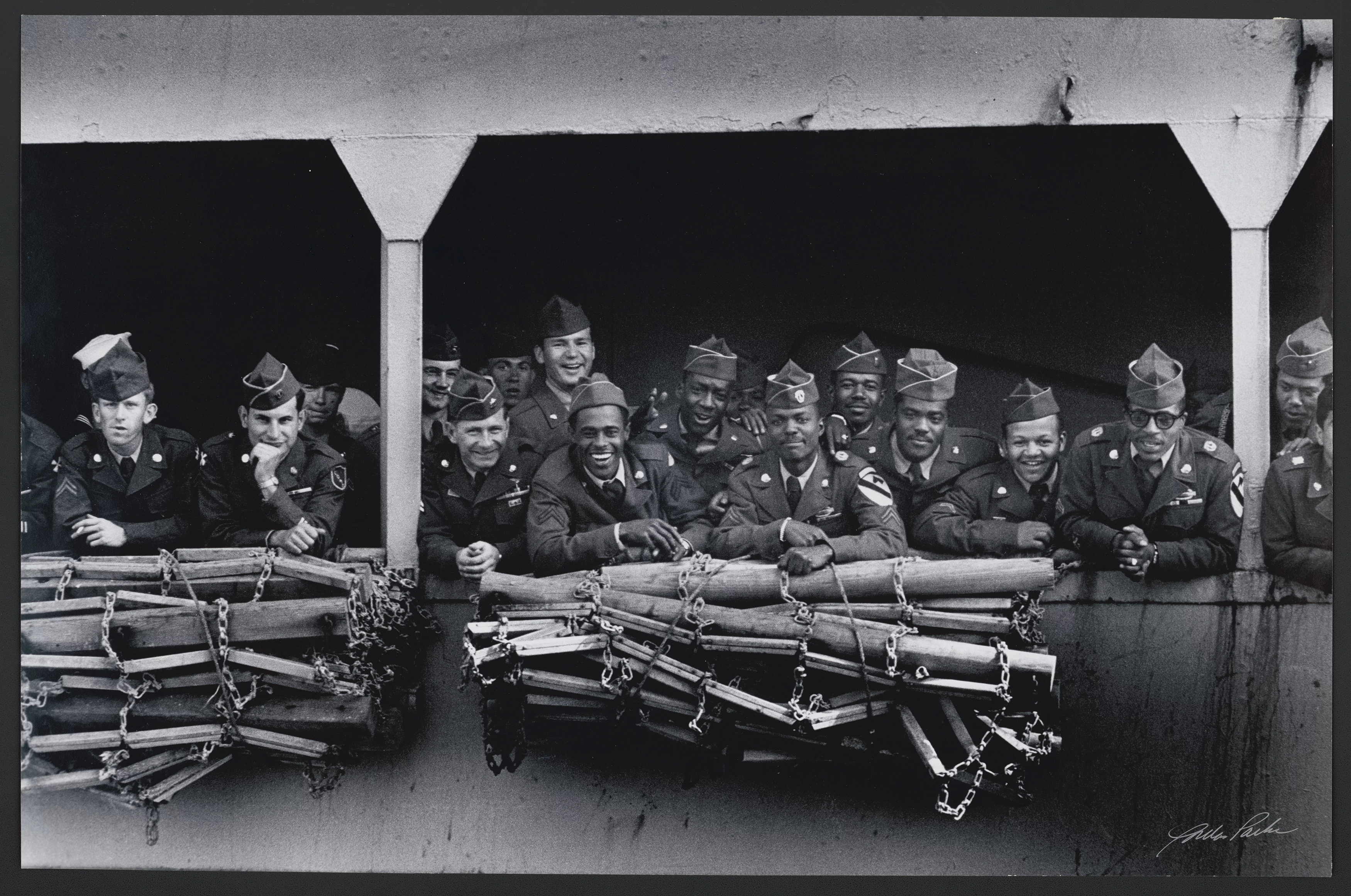
African American and White Soldiers aboard A Ship Gordon Parks, 1941
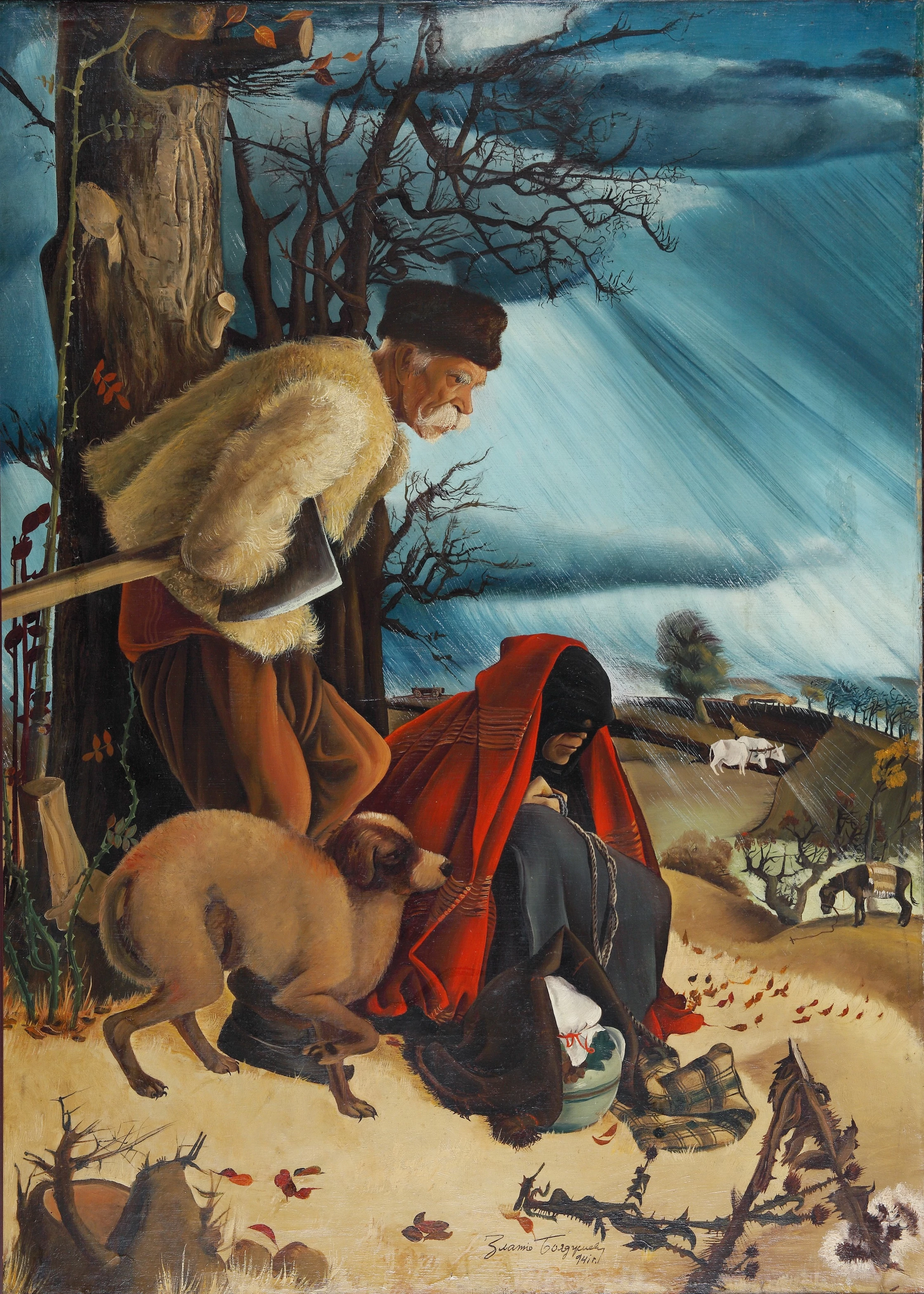
Autumn Zlatyu Boyadzhiev, 1941
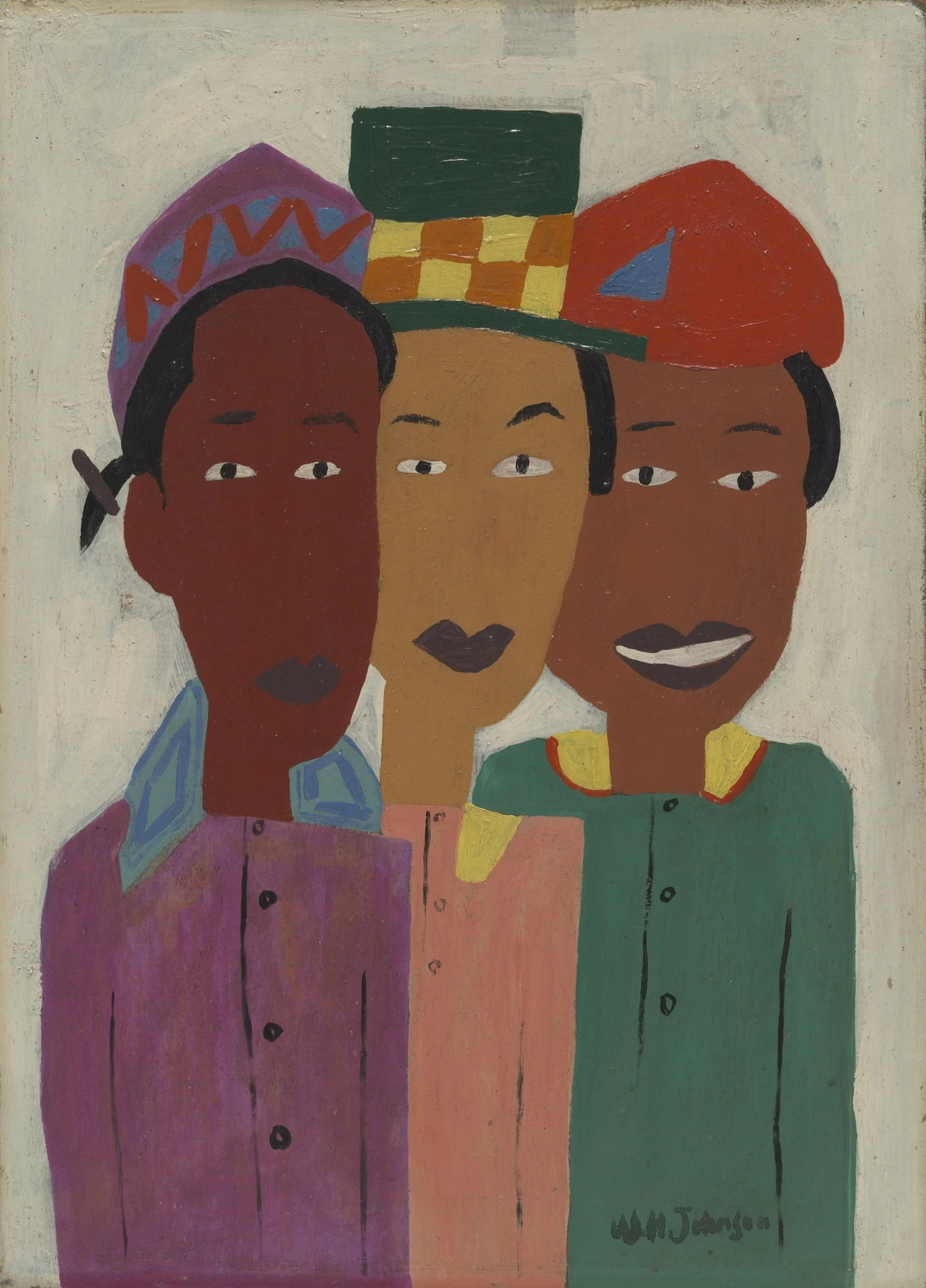
Children William H. Johnson, 1941
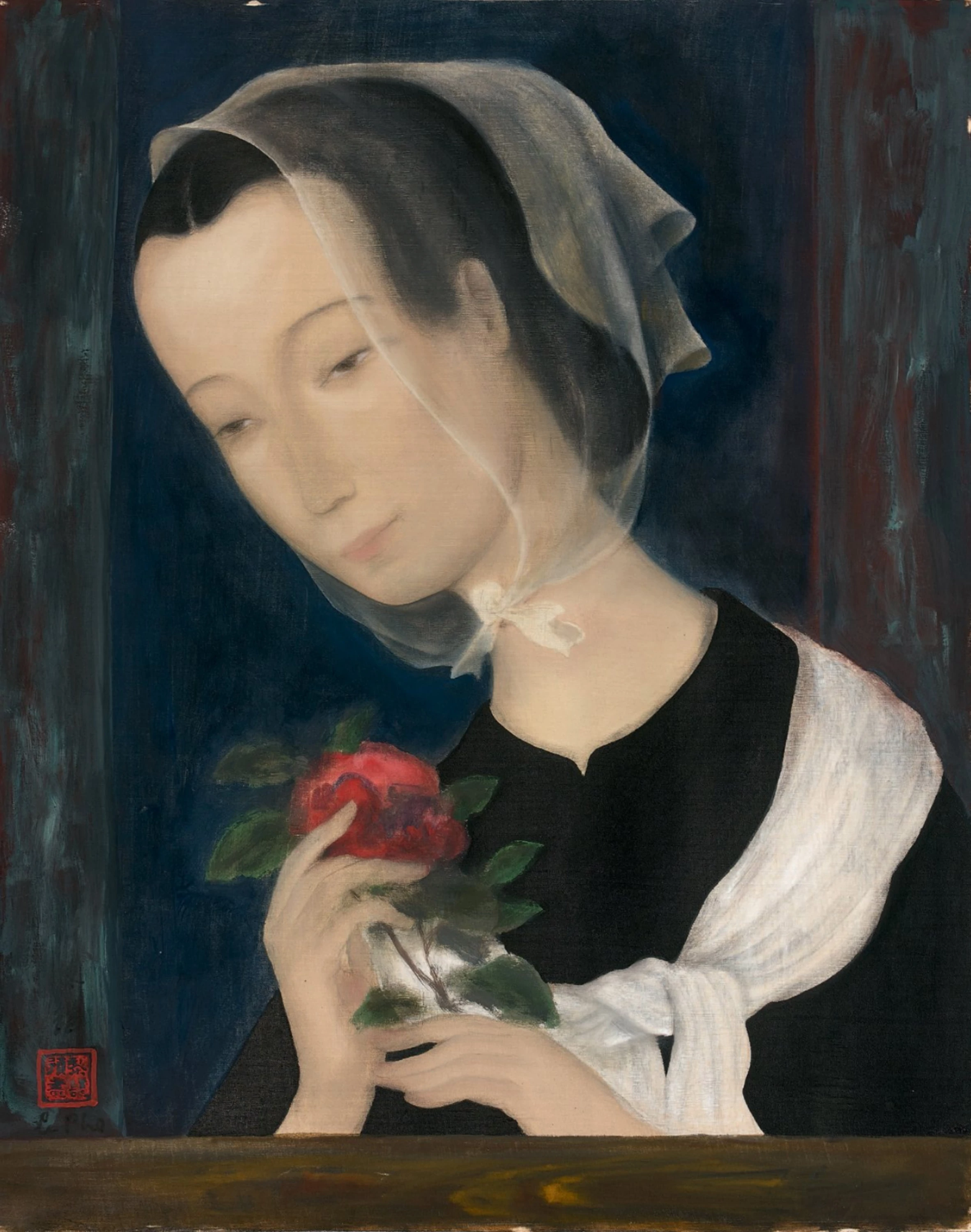
Girl with a rose Lê Phổ, 1941
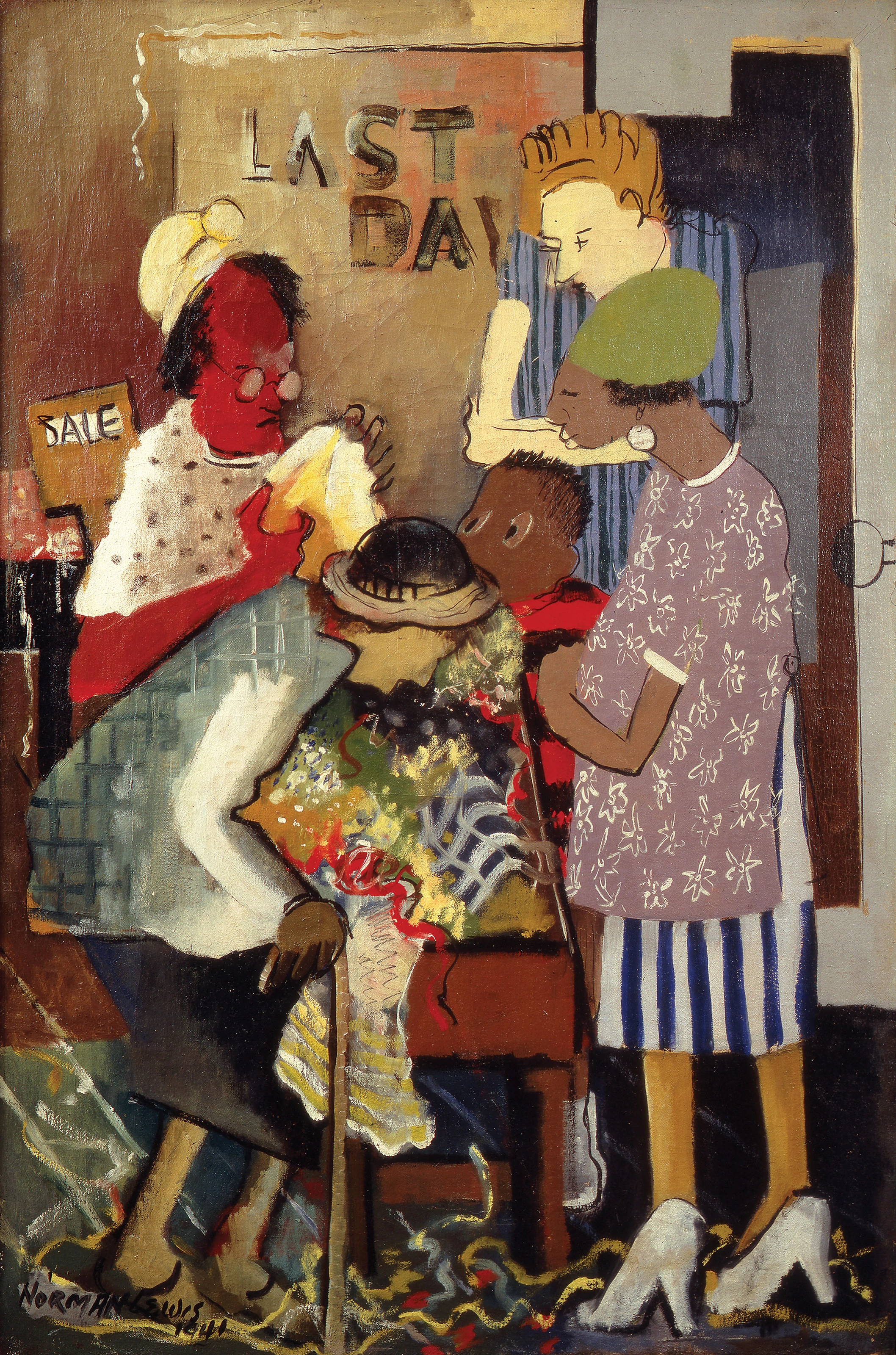
Meeting Place Norman Lewis, 1941
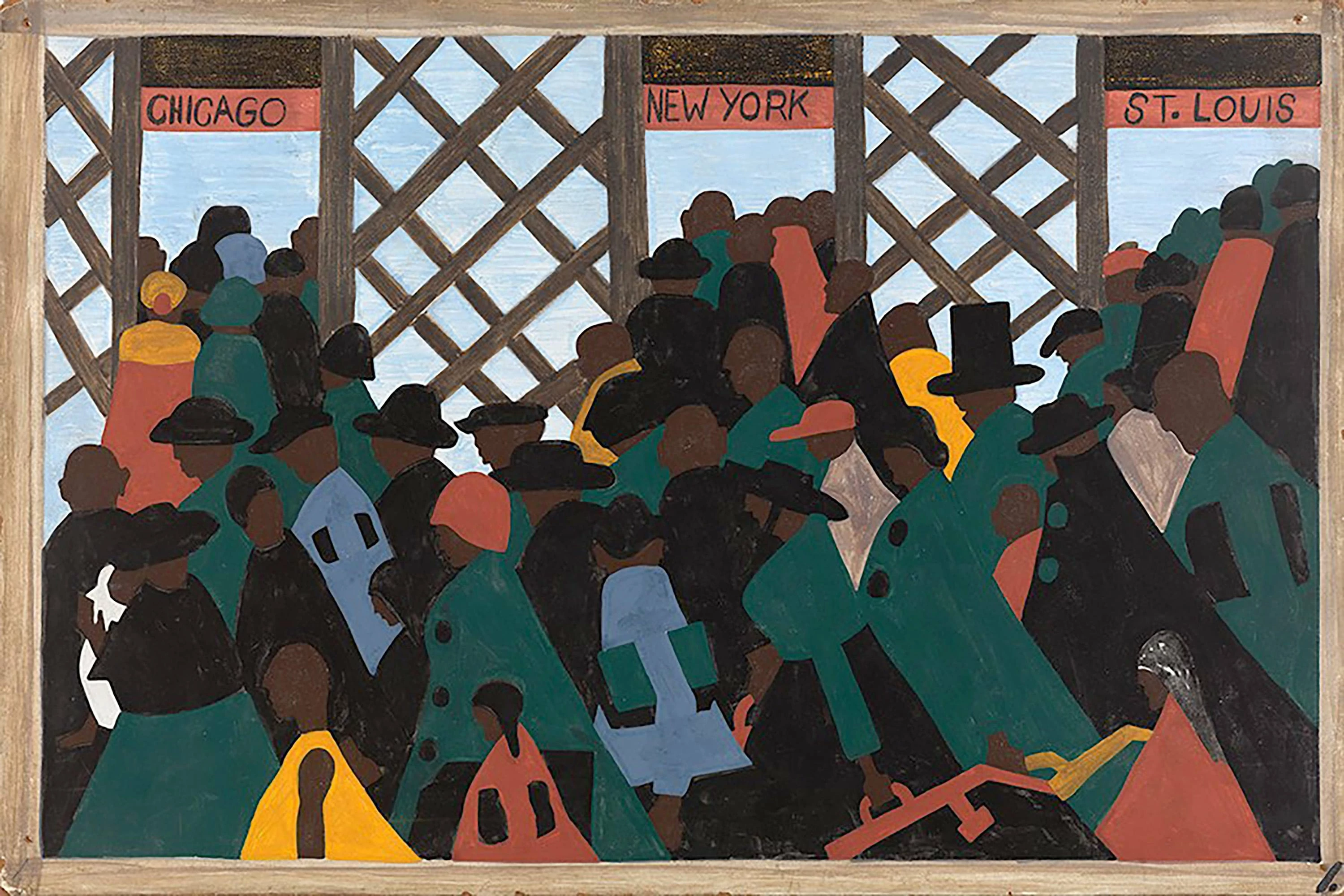
Migration Series No.1: During World War I there was a great migration north by southern African Americans Jacob Lawrence, 1940 – 1941

Migration Series No.2: The war had caused a labor shortage in northern industry. Citizens of foreign countries were returning to their native lands Jacob Lawrence, 1940 – 1941
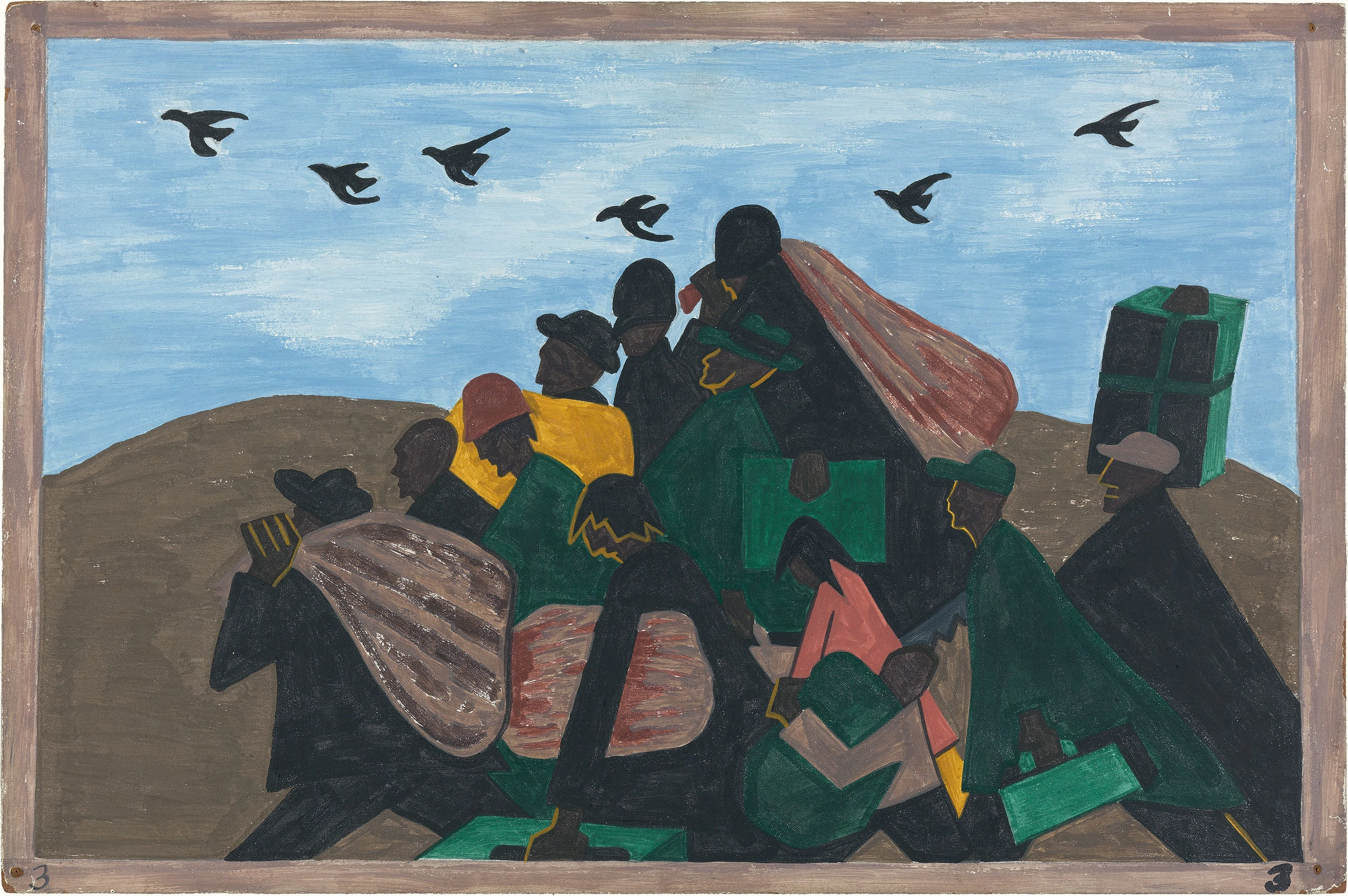
Migration Series No.3: From every southern town migrants left by the hundreds to travel north Jacob Lawrence, 1940 – 1941
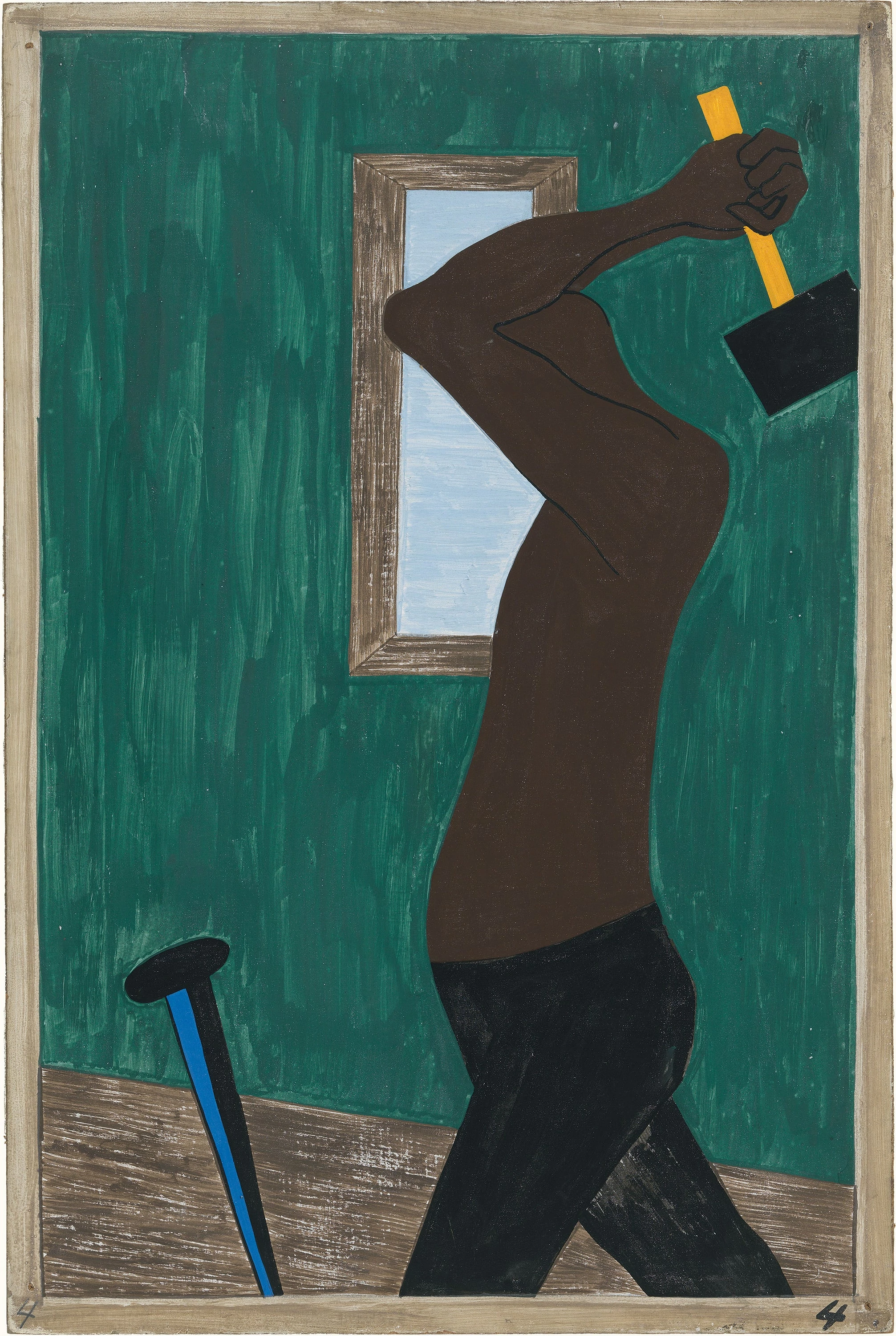
Migration Series No.4: All other sources of labor having been exhausted, the migrants were the last resource Jacob Lawrence, 1940 – 1941

Migration Series No.5: Migrants were advanced passage on the railroads, paid for by northern industry. Northern industry was to be repaid by the migrants out of their future wages Jacob Lawrence, 1940 – 1941
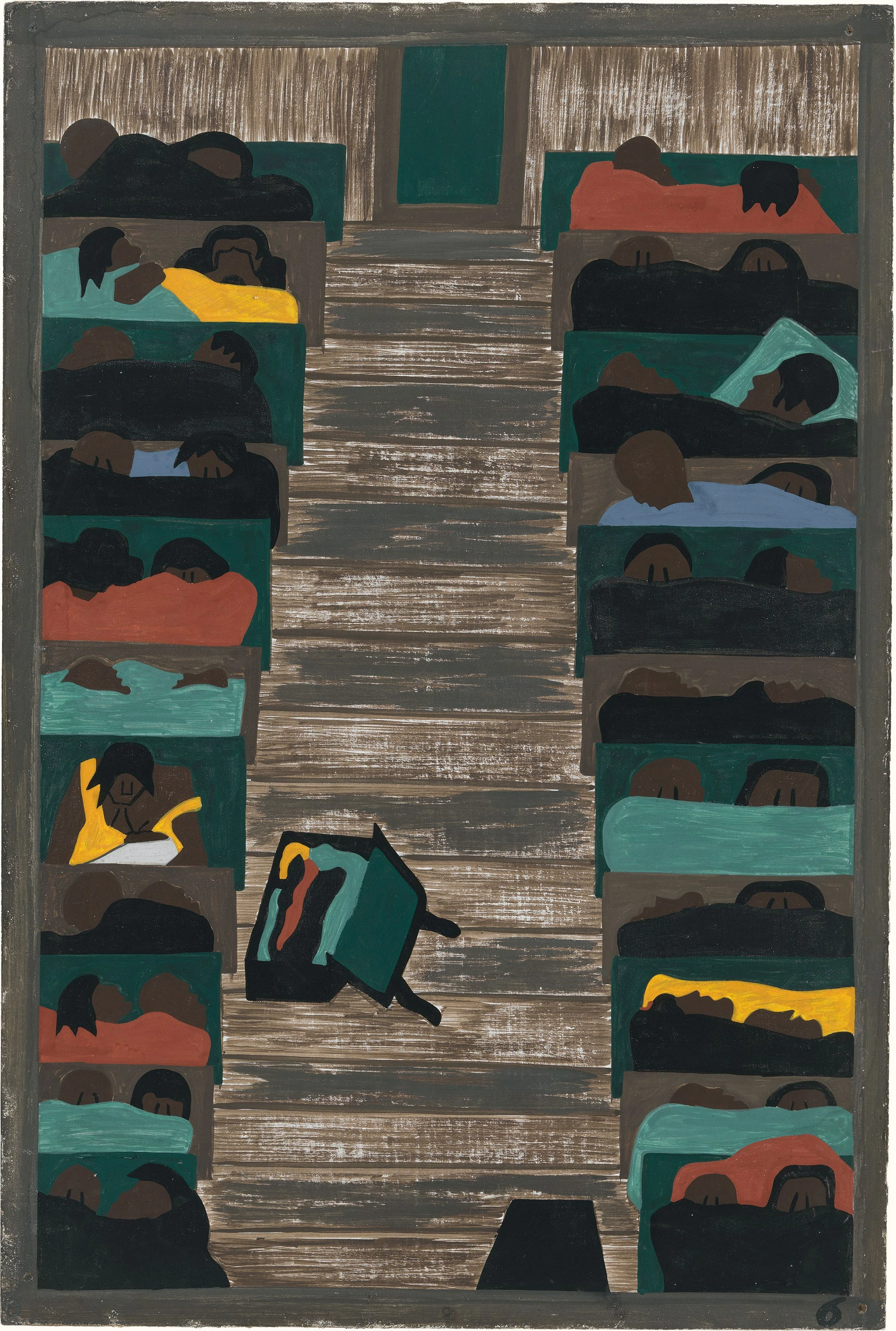
Migration Series No.6: The trains were crowded with migrants Jacob Lawrence, 1940 – 1941
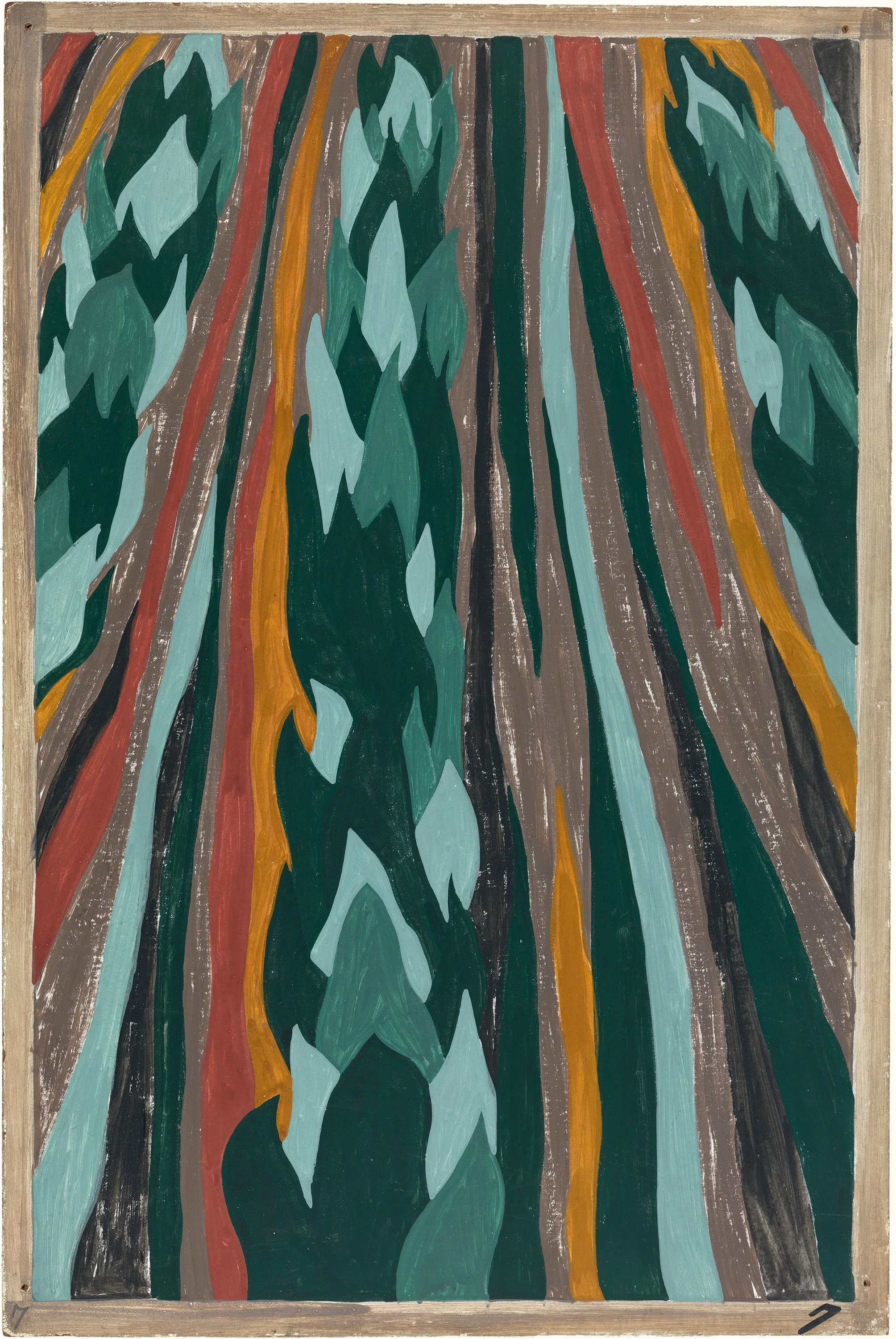
Migration Series No.7: The migrant, whose life had been rural and nurtured by the earth, was now moving to urban life dependent on industrial machinery Jacob Lawrence, 1940 – 1941

Migration Series No.8: Some left because of promises of work in the North. Others left because their farms had been devastated by floods Jacob Lawrence, 1940 – 1941
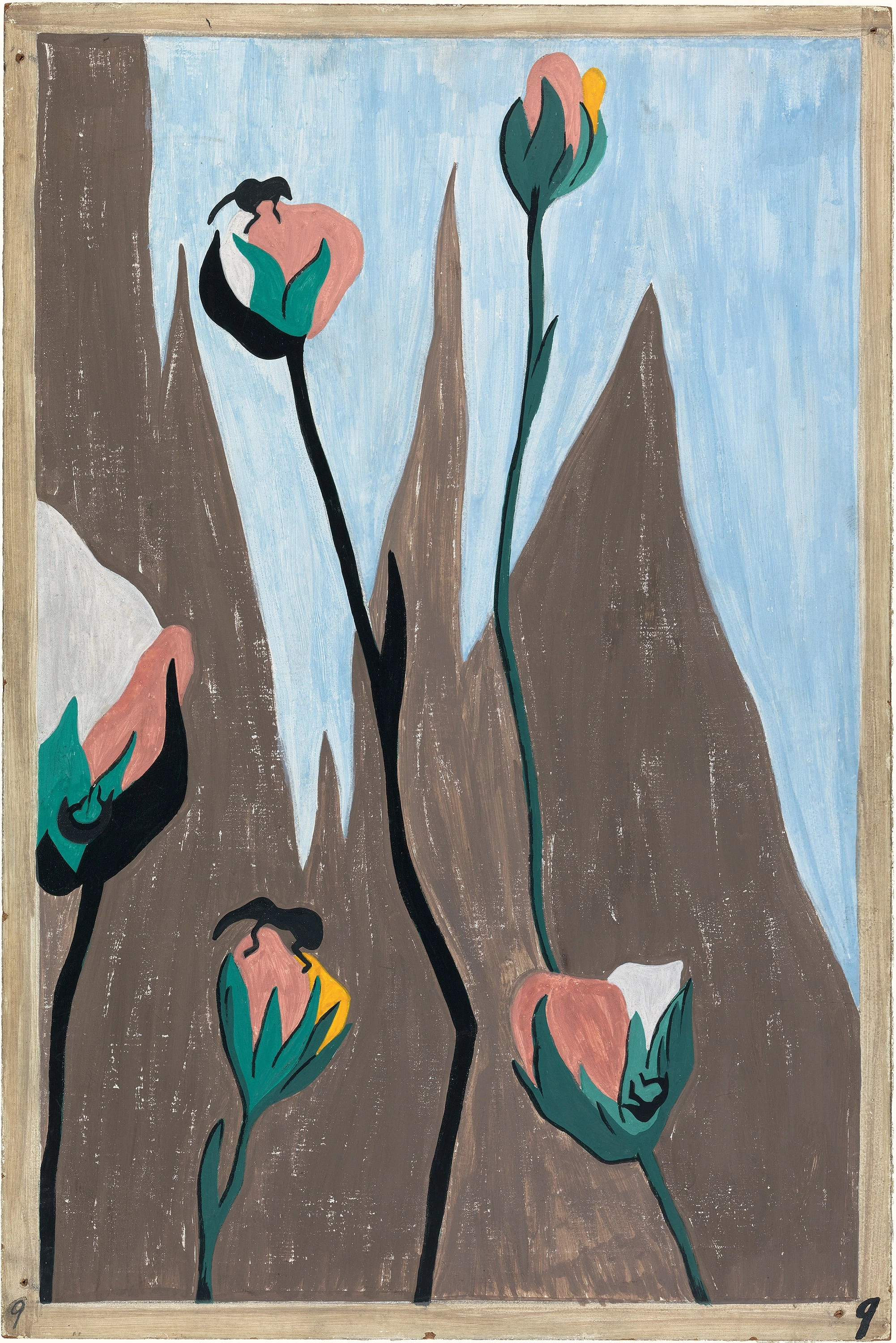
Migration Series No.9: They left because the boll weevil had ravaged the cotton crop Jacob Lawrence, 1940 – 1941
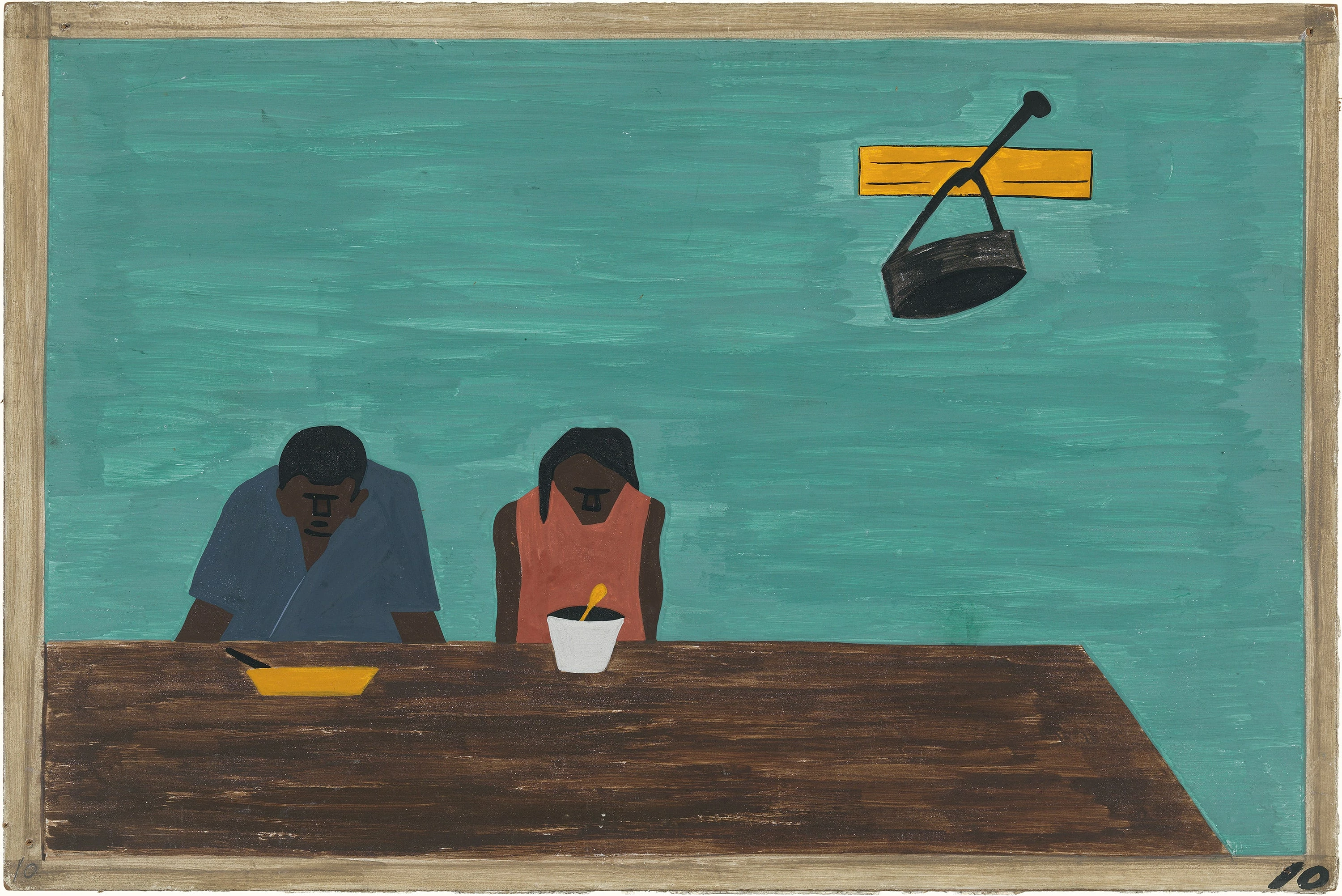
Migration Series No.10: They were very poor Jacob Lawrence, 1940 – 1941

Migration Series No.11: Food had doubled in price because of the war Jacob Lawrence, 1940 – 1941
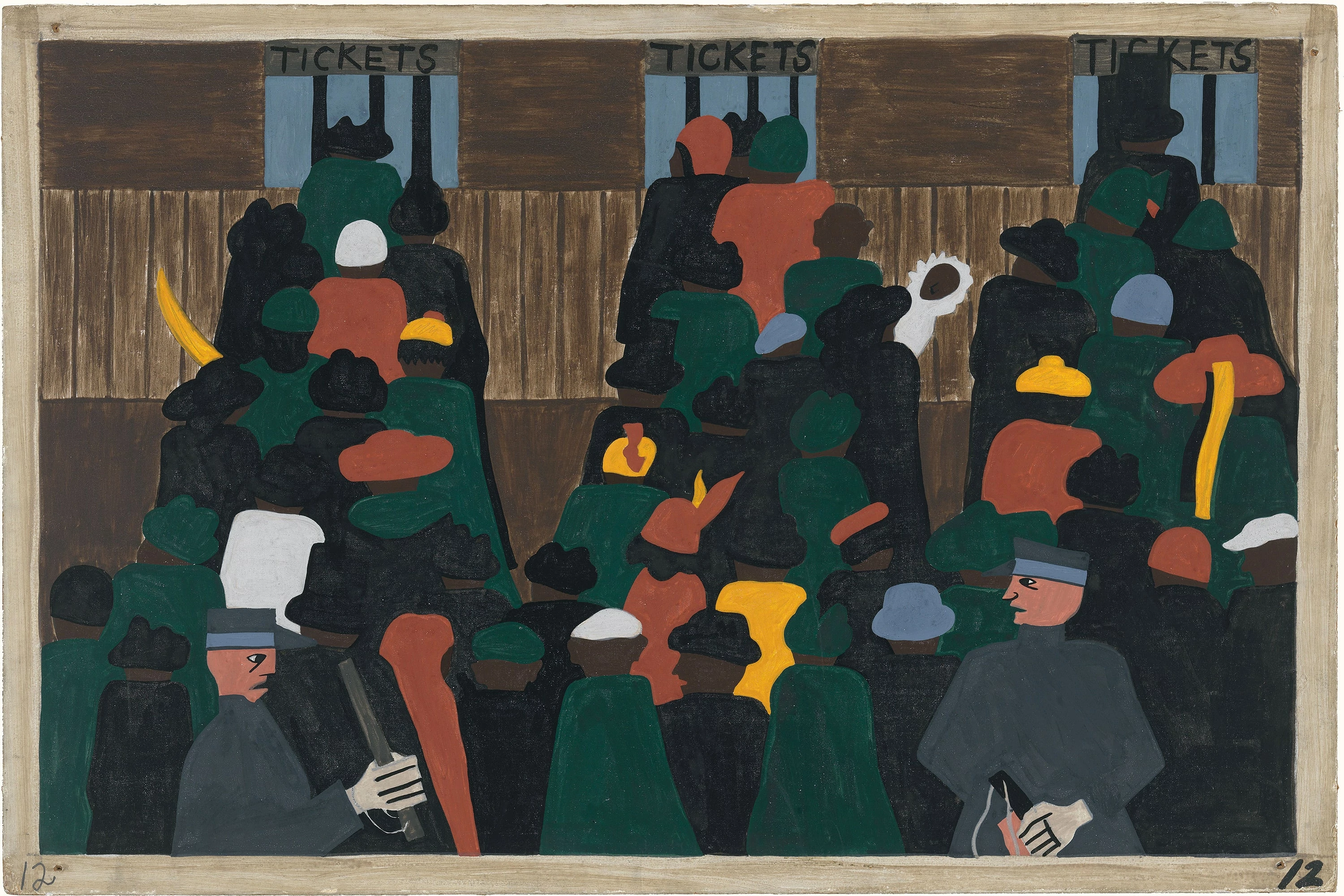
Migration Series No.12: The railroad stations were at times so crowded with people leaving that special guards had to be called to keep order Jacob Lawrence, 1940 – 1941
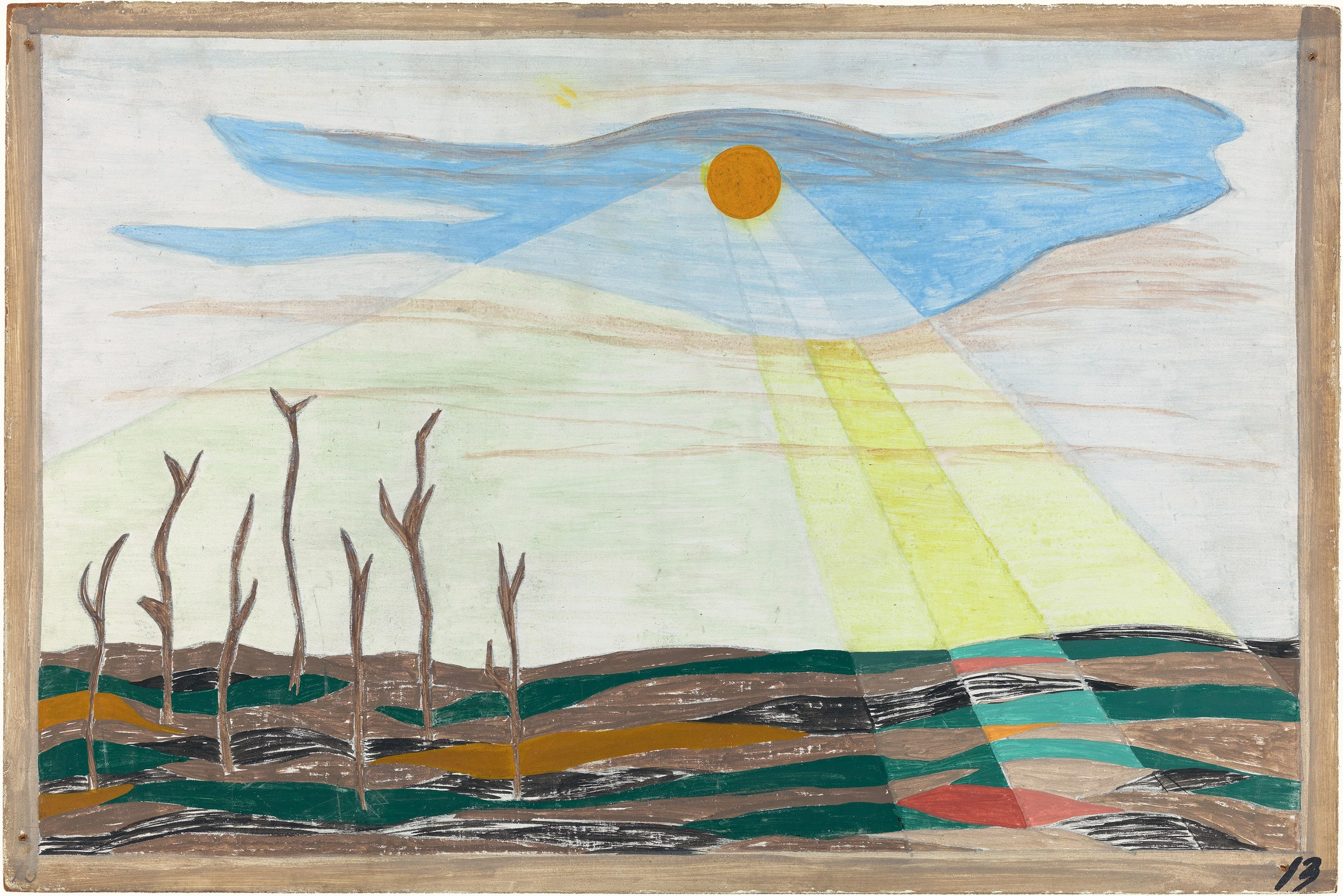
Migration Series No.13: The crops were left to dry and rot. There was no one to tend them Jacob Lawrence, 1940 – 1941

Migration Series No.14: For African Americans there was no justice in the southern courts Jacob Lawrence, 1940 – 1941
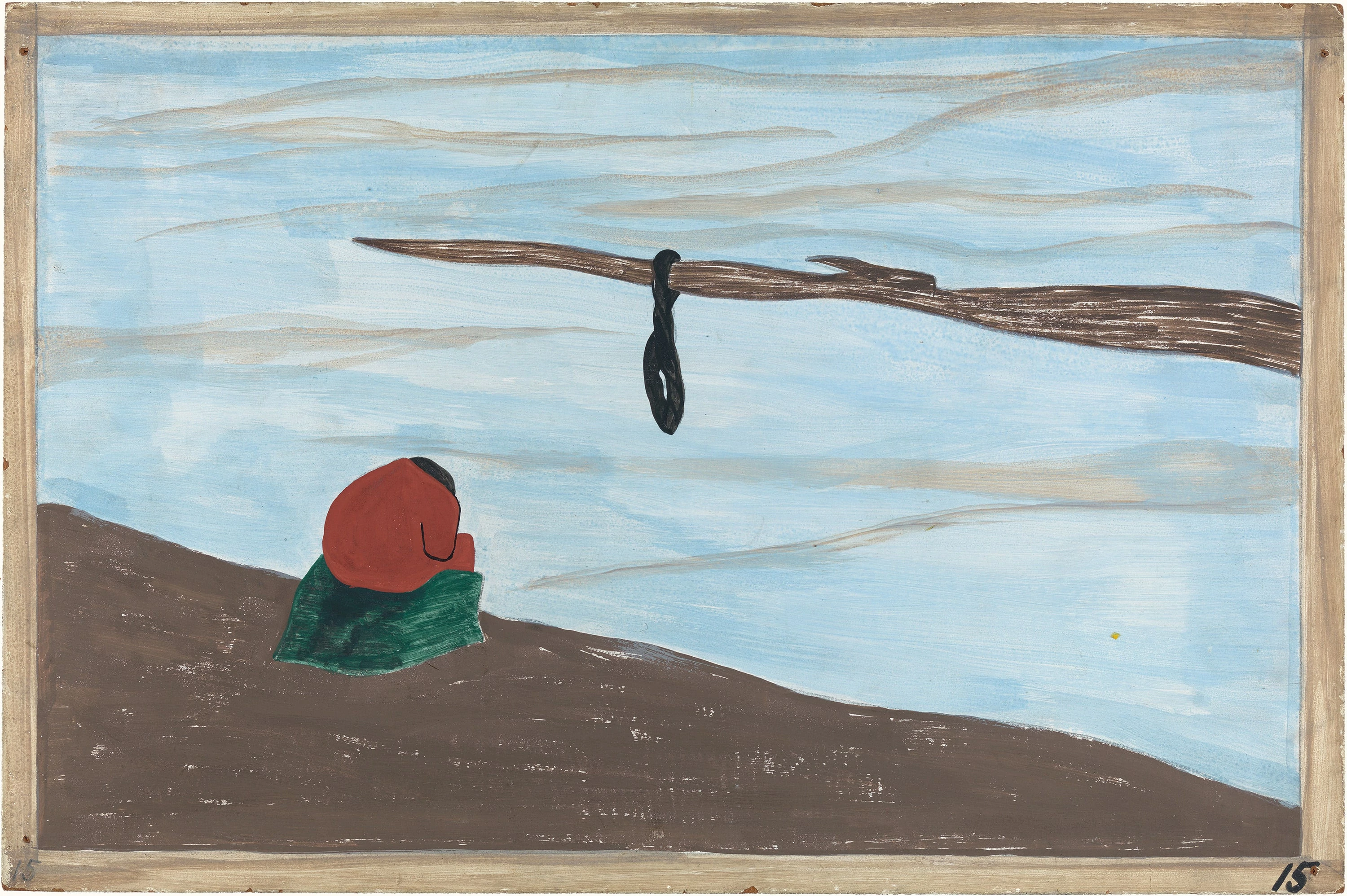
Migration Series No.15: There were lynchings Jacob Lawrence, 1940 – 1941
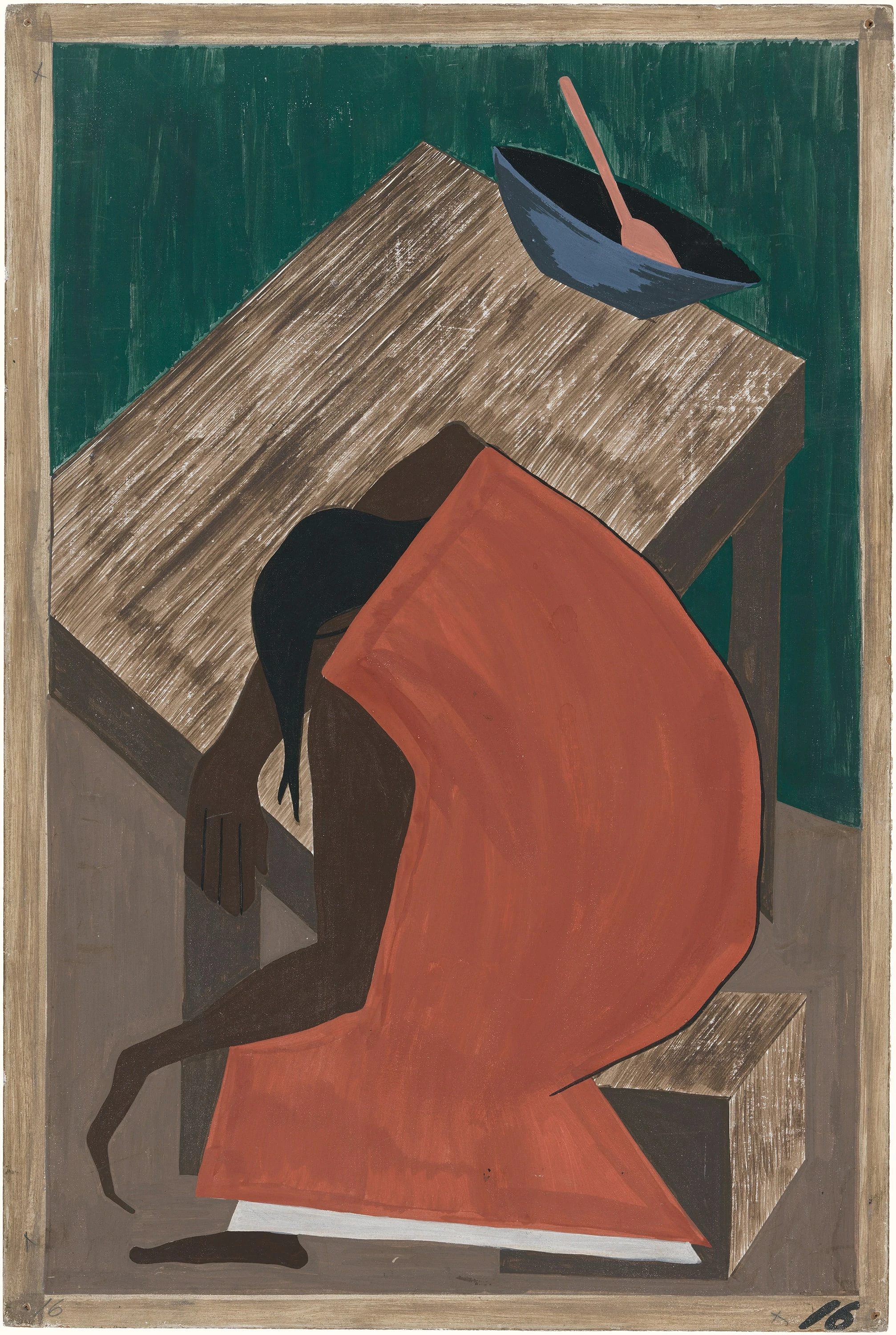
Migration Series No.16: After a lynching the migration quickened Jacob Lawrence, 1940 – 1941

Migration Series No.17: Tenant farmers received harsh treatment at the hands of the planter Jacob Lawrence, 1940 – 1941
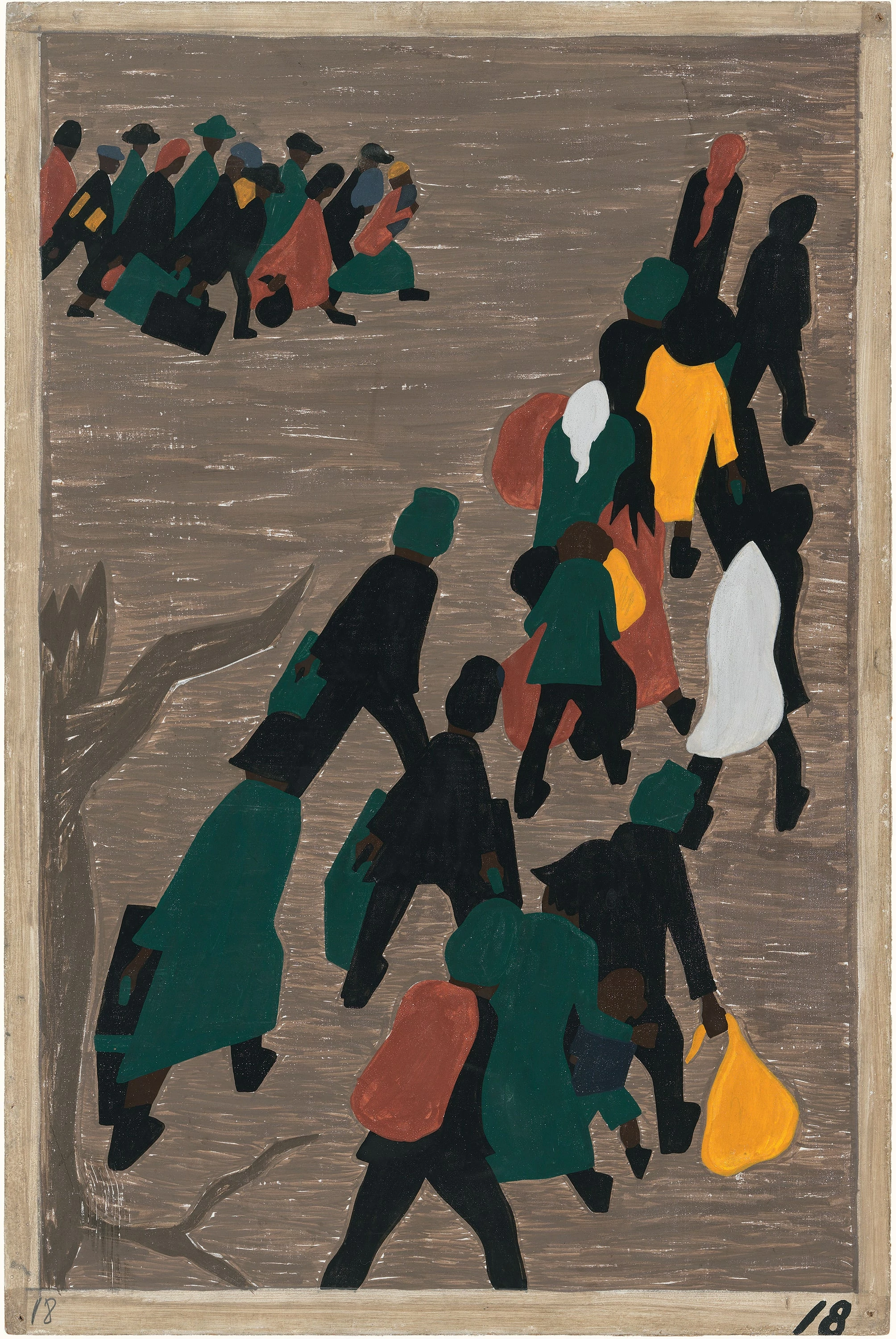
Migration Series No.18: The migration gained in momentum Jacob Lawrence, 1940 – 1941
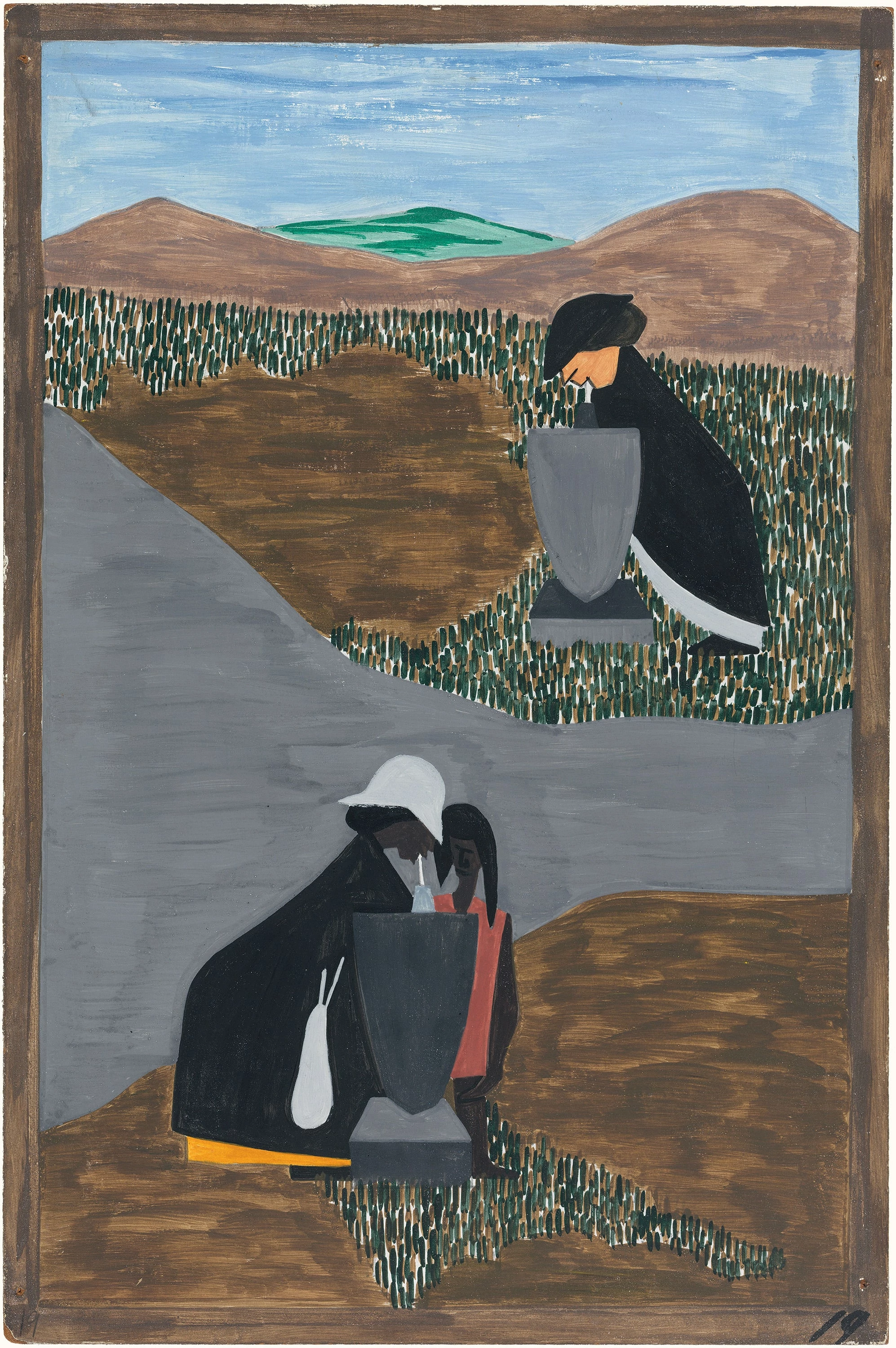
Migration Series No.19: There had always been discrimination Jacob Lawrence, 1940 – 1941
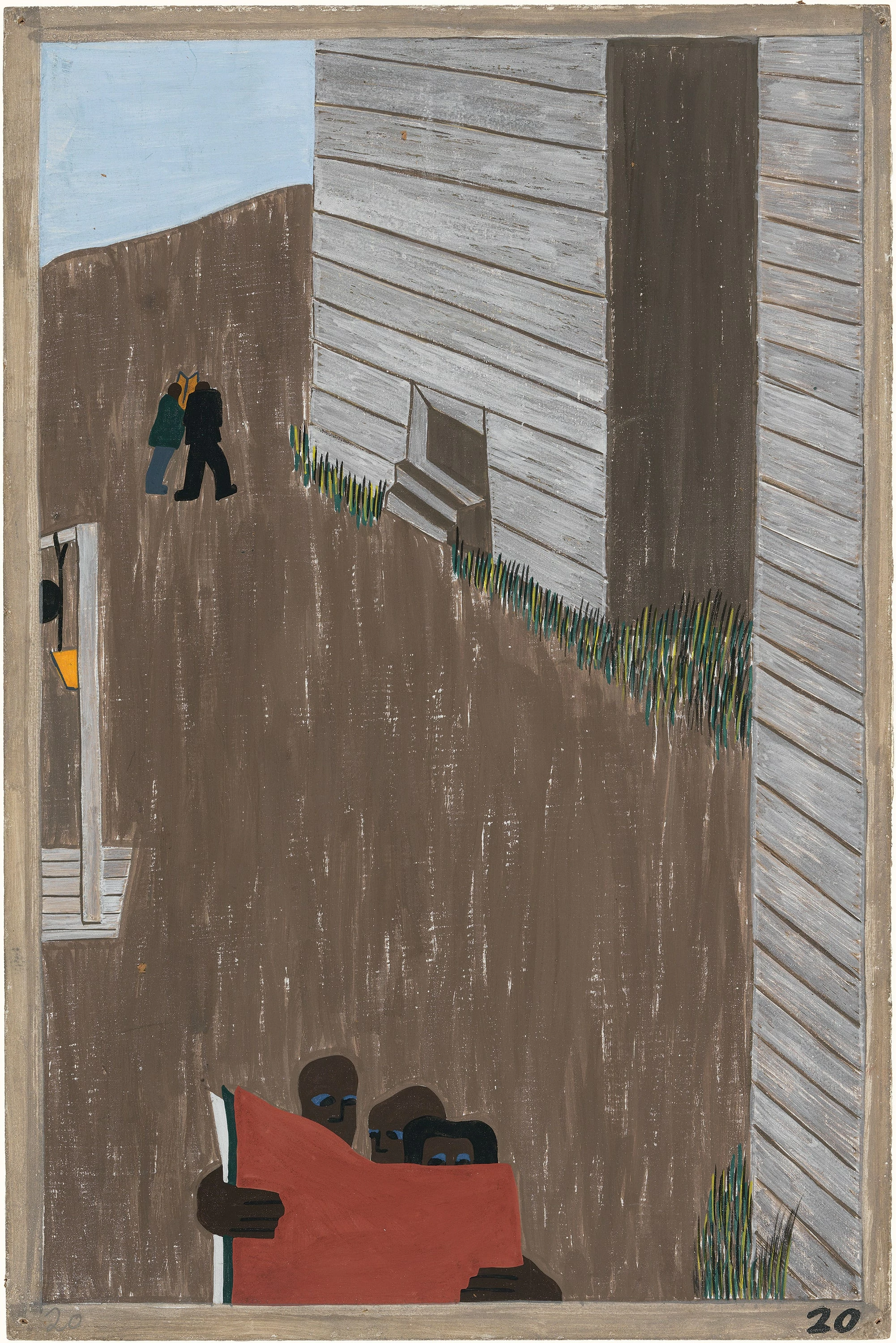
Migration Series No.20: In many of the communities the Black press was read with great interest. It encouraged the movement Jacob Lawrence, 1940 – 1941
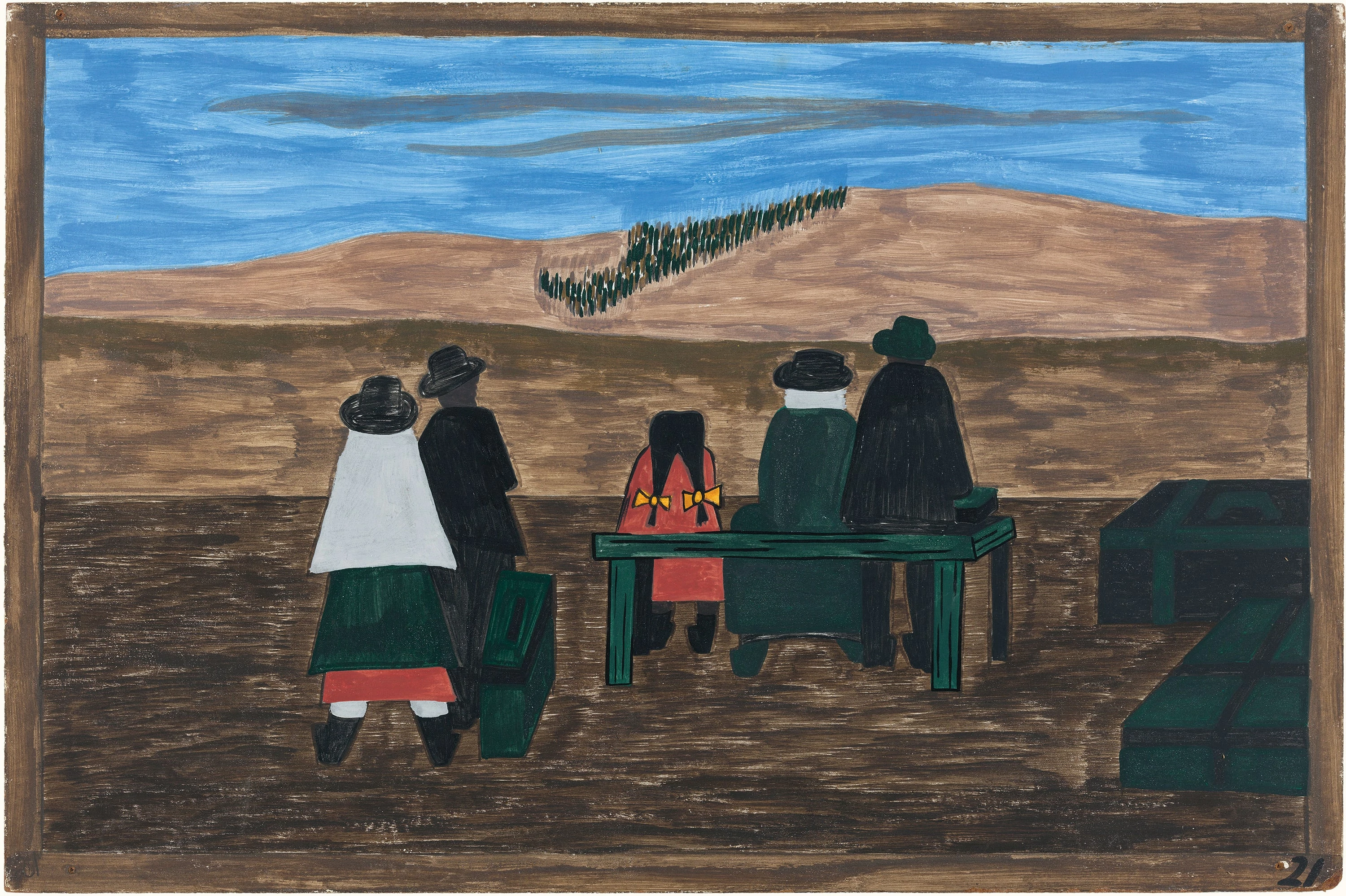
Migration Series No.21: Families arrived at the station very early. They did not wish to miss their trains north Jacob Lawrence, 1940 – 1941
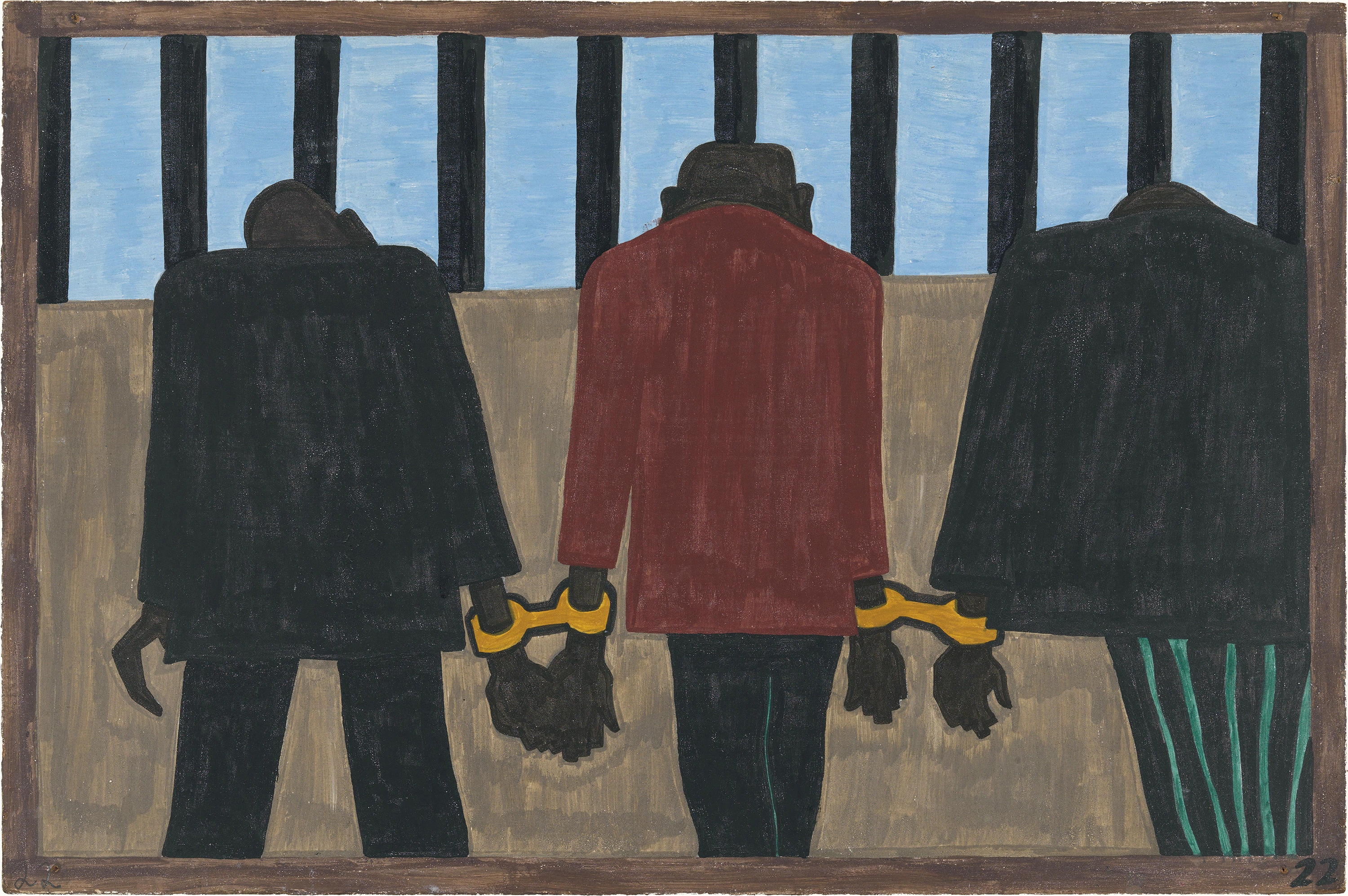
Migration Series No.22: Migrants left. They did not feel safe. It was not wise to be found on the streets late at night. They were arrested on the slightest provocation Jacob Lawrence, 1940 – 1941

Migration Series No.23: The migration spread Jacob Lawrence, 1940 – 1941

Migration Series No.24: Their children were forced to work in the fields. They could not go to school Jacob Lawrence, 1940 – 1941

Migration Series No.25: They left their homes. Soon some communities were left almost empty Jacob Lawrence, 1940 – 1941

Migration Series No.26: And people all over the South continued to discuss this great movement Jacob Lawrence, 1940 – 1941
